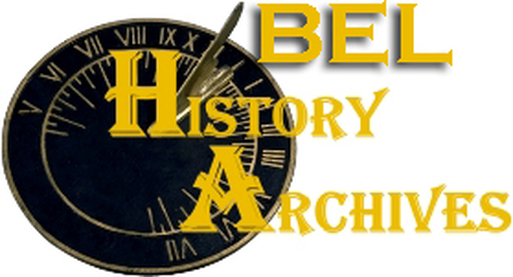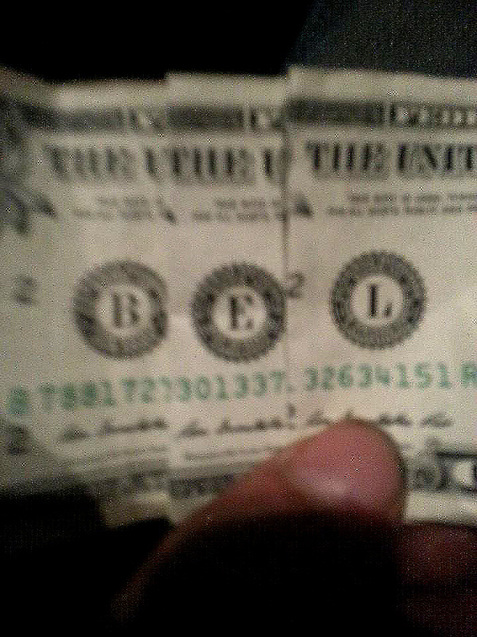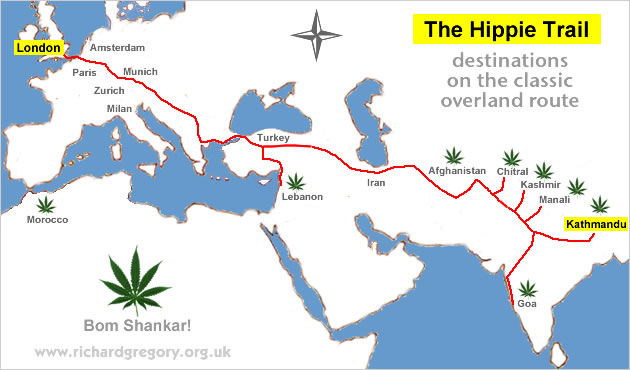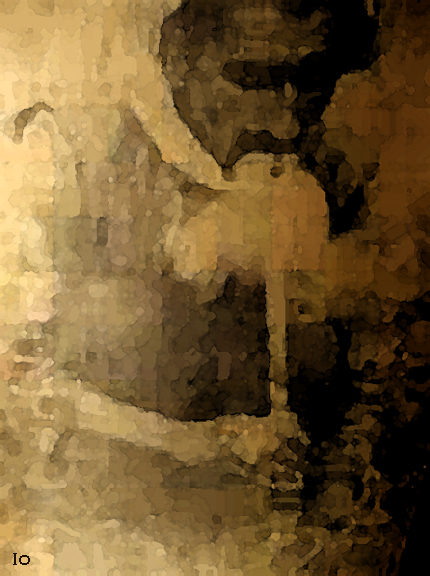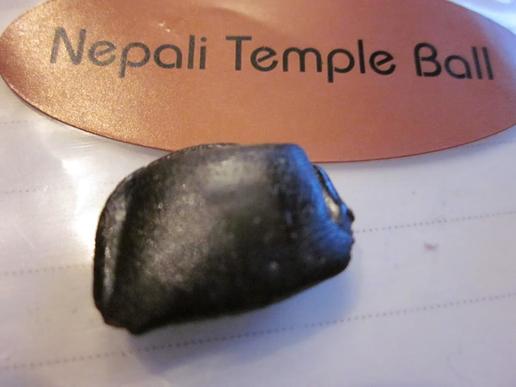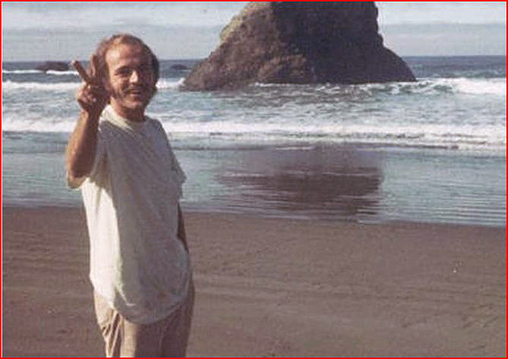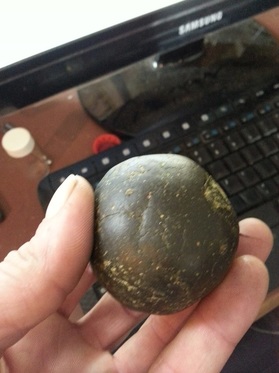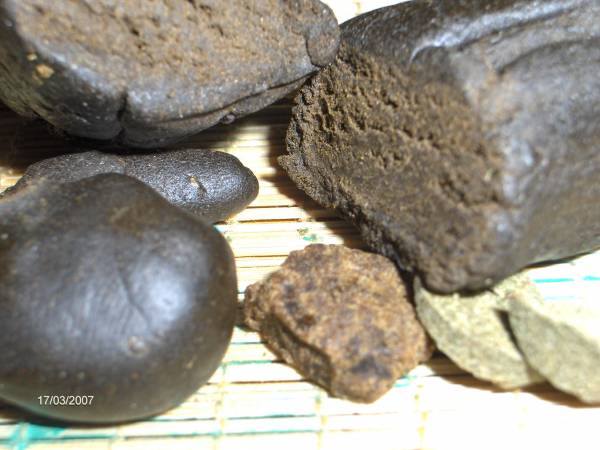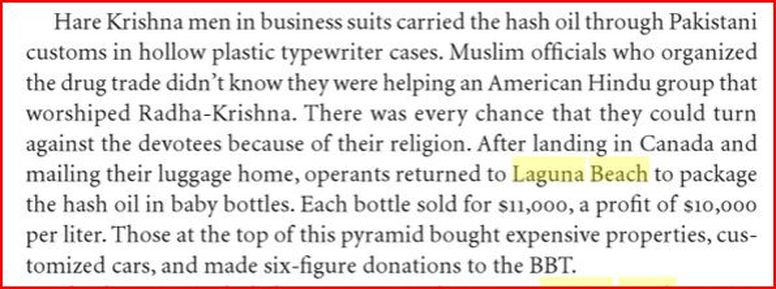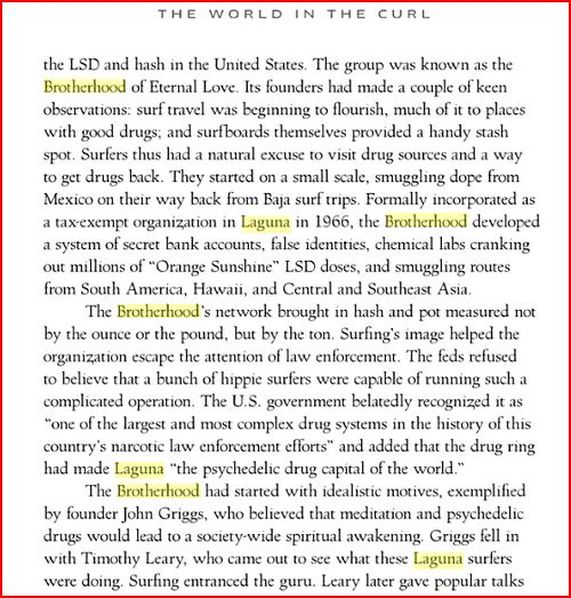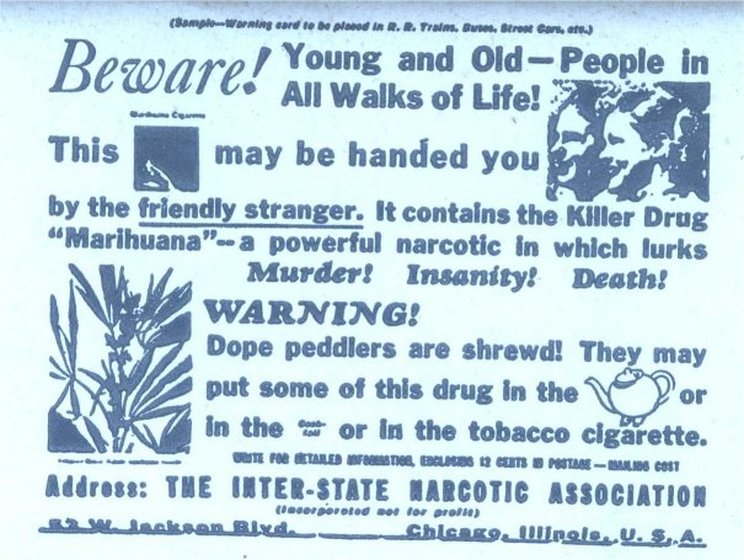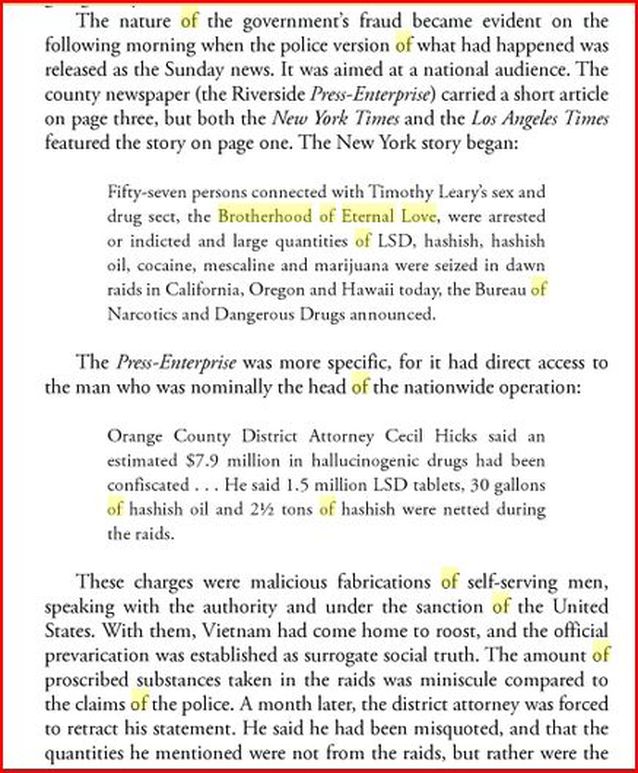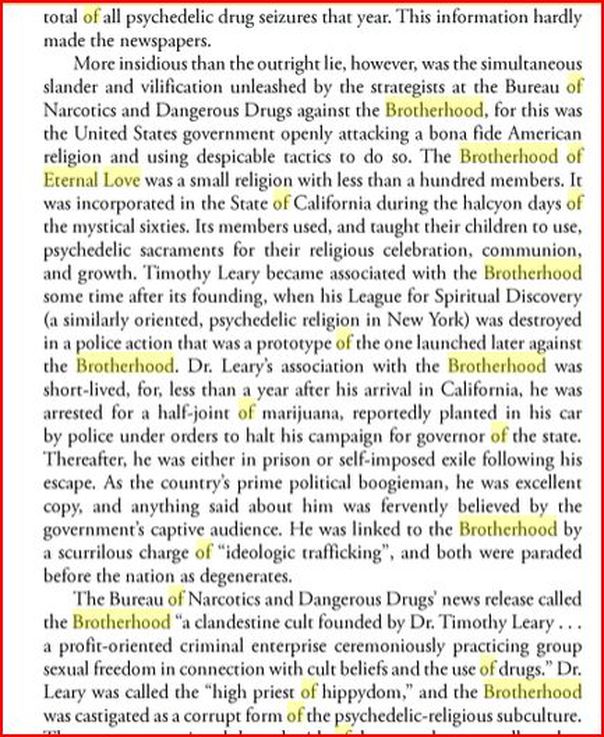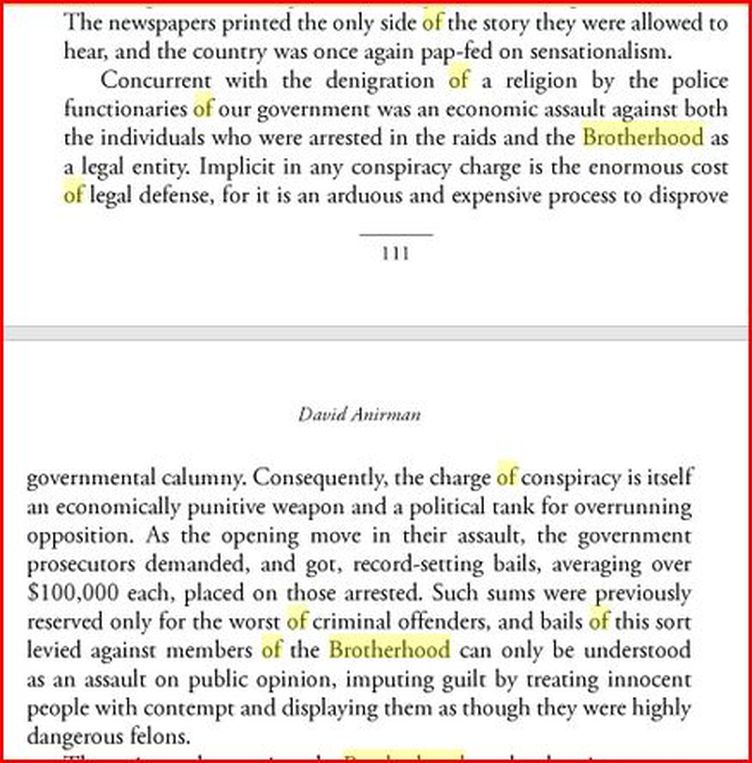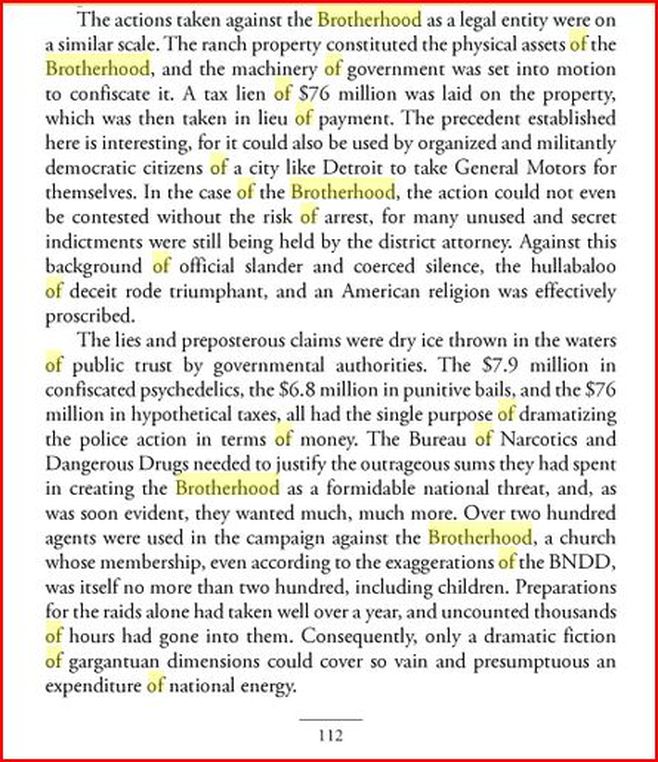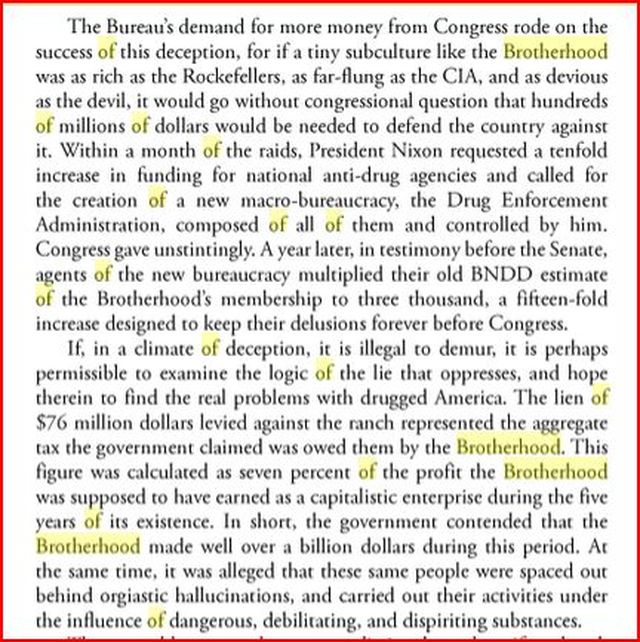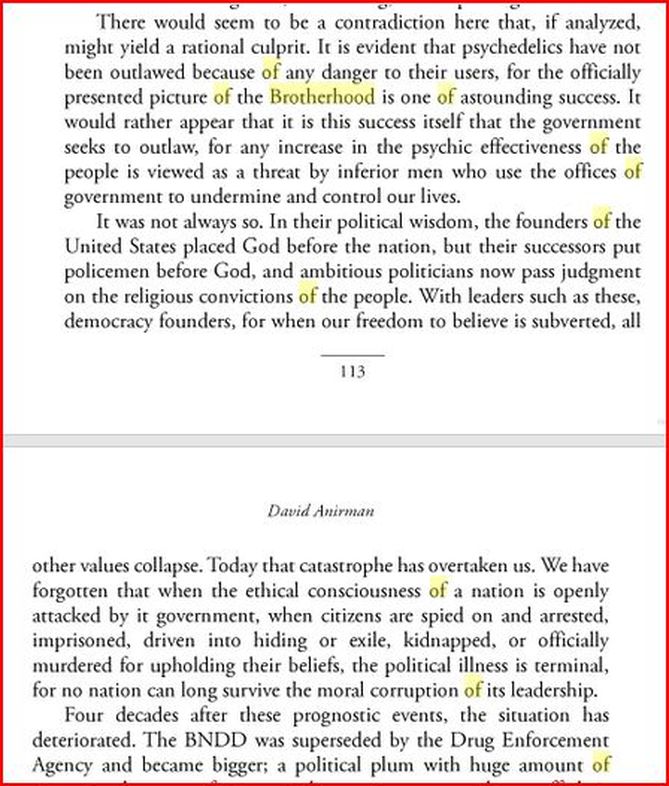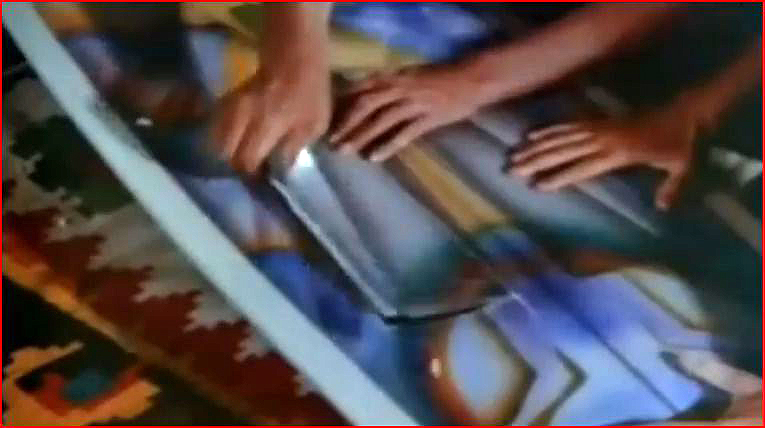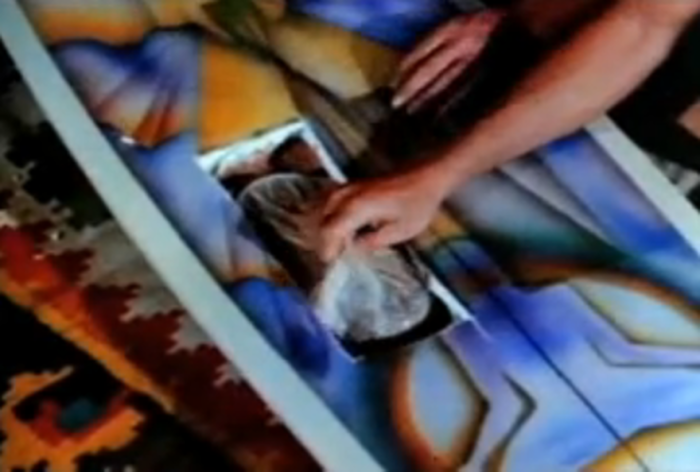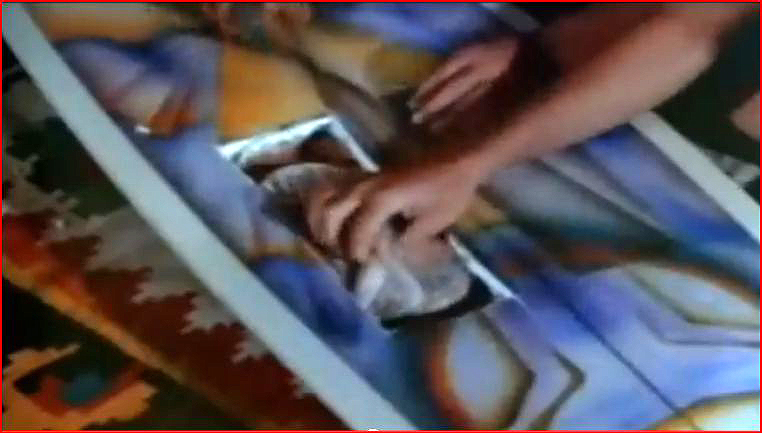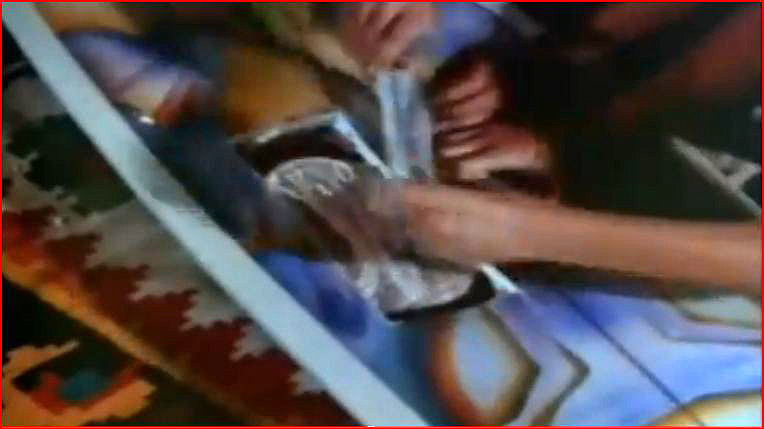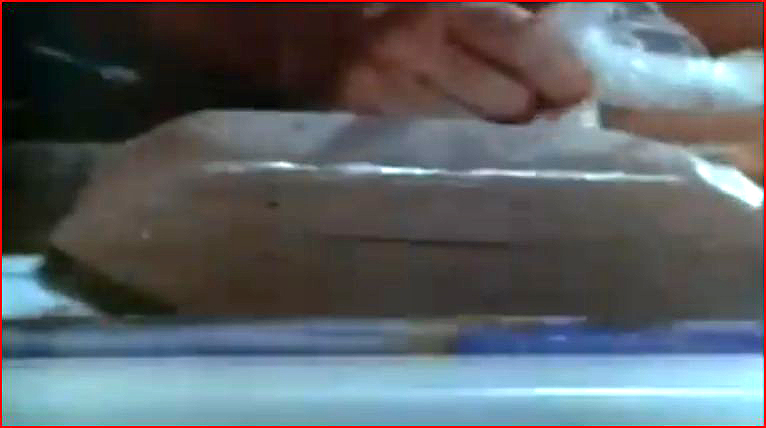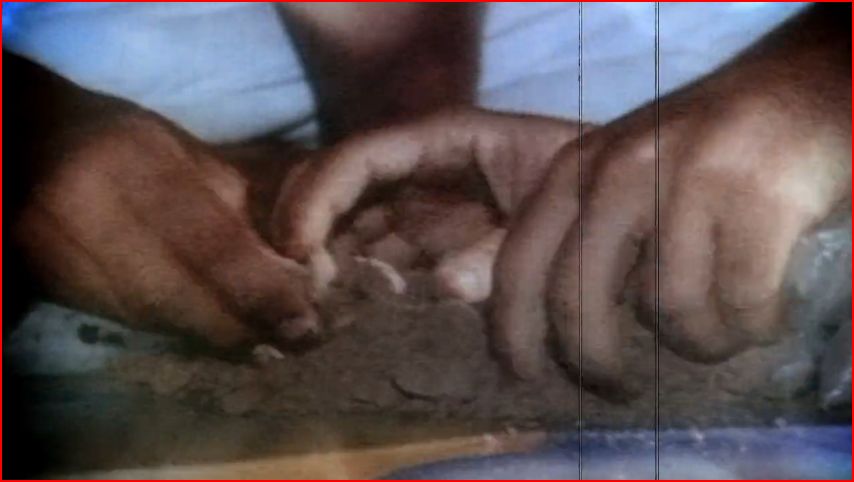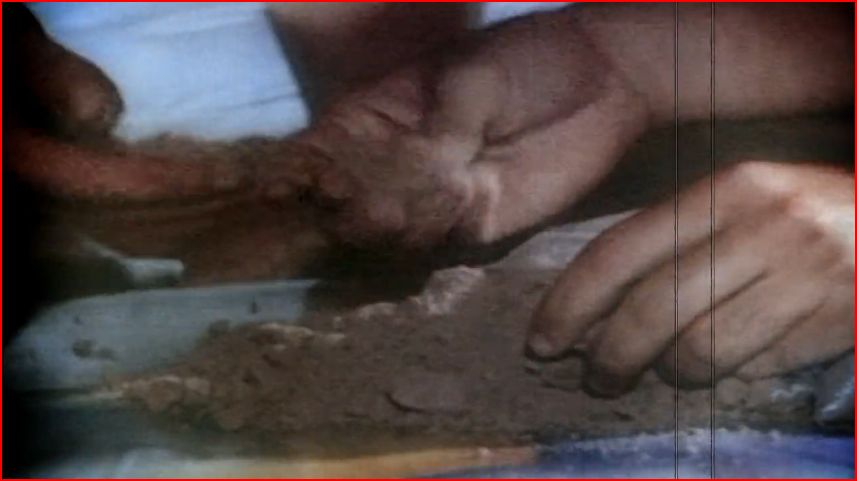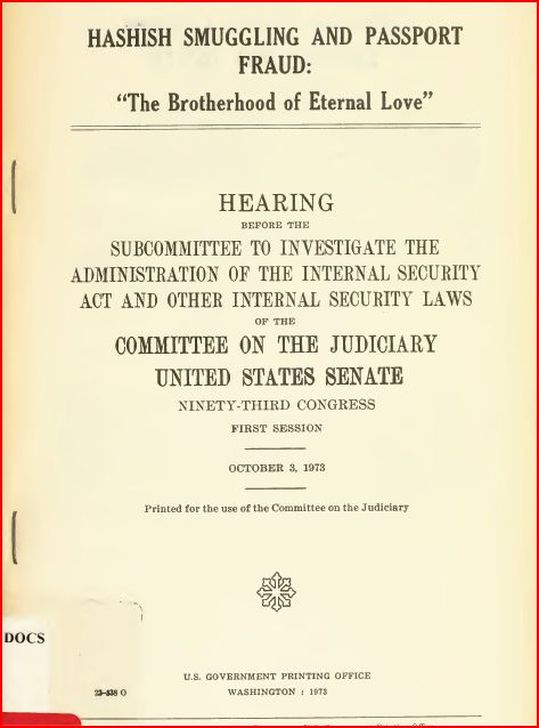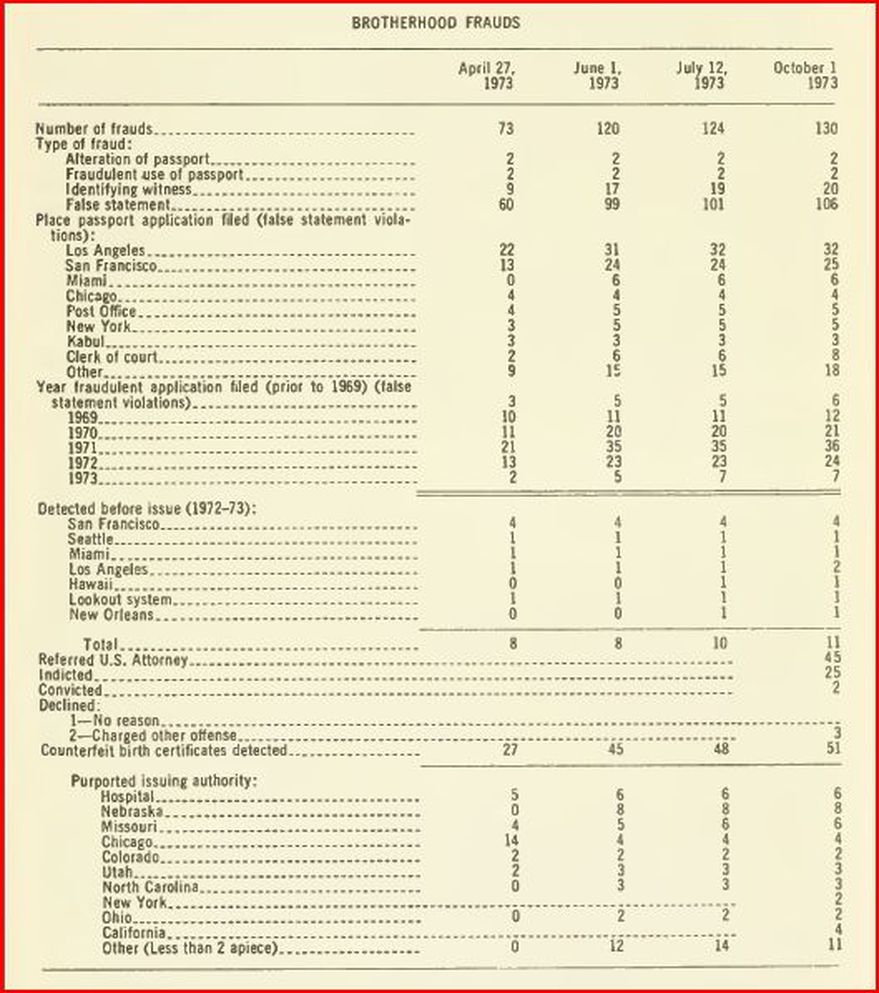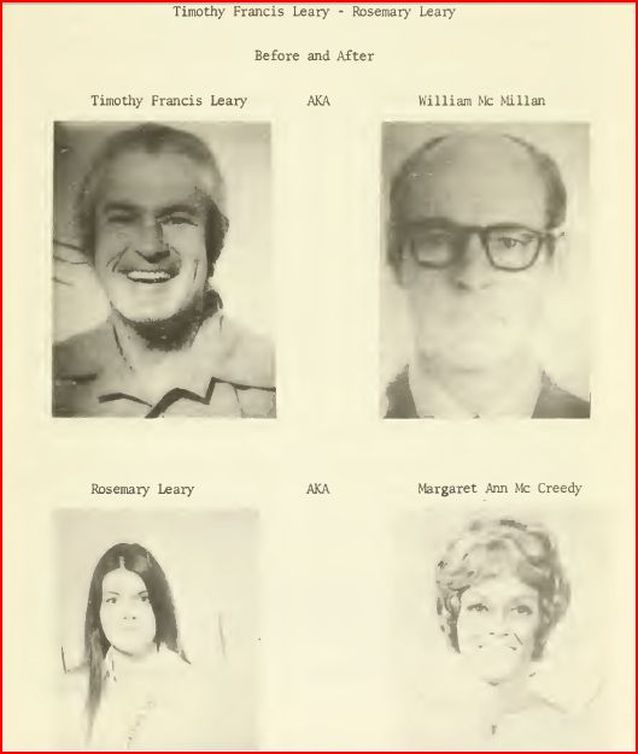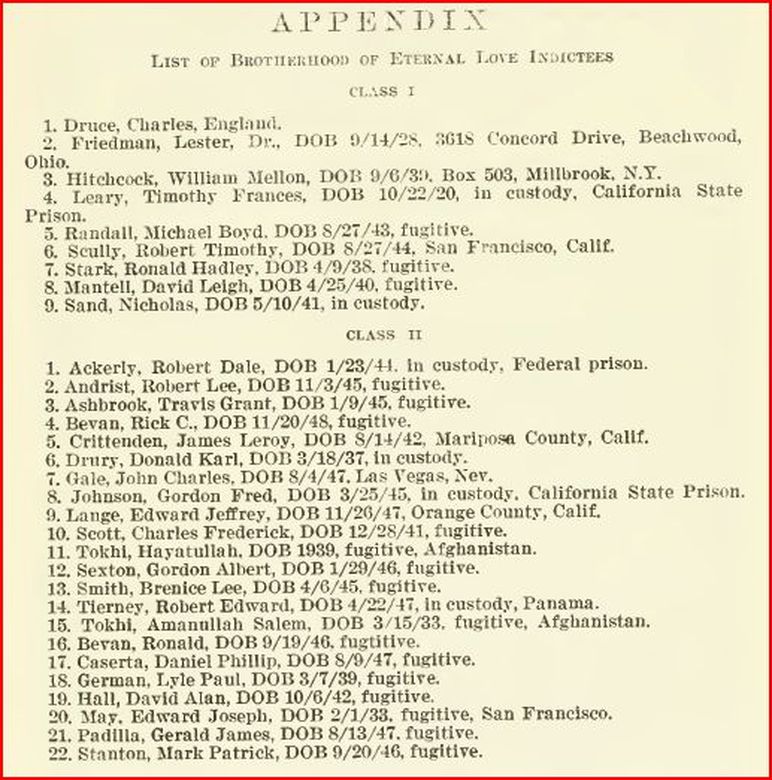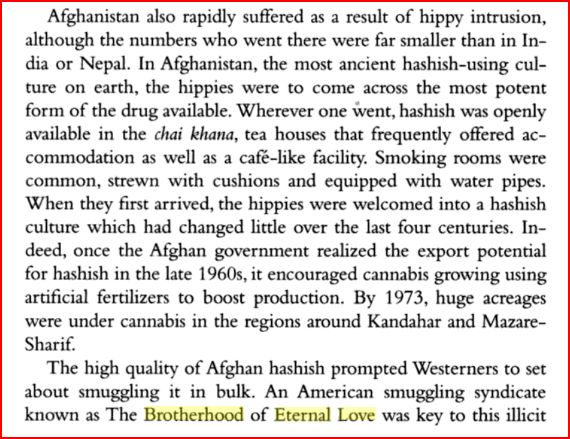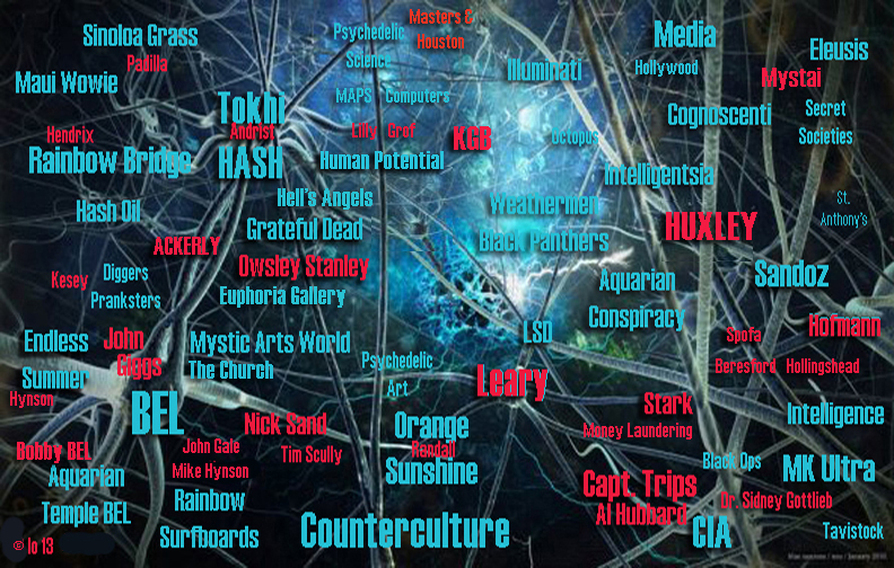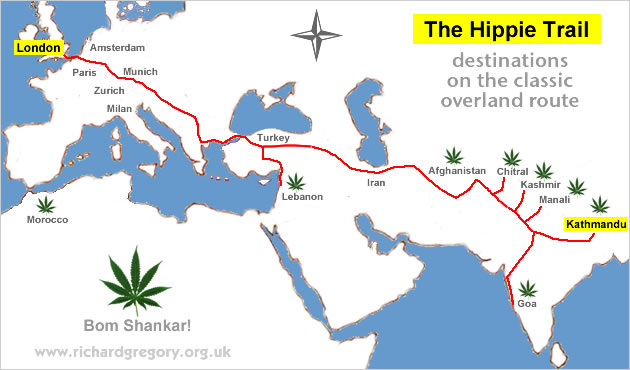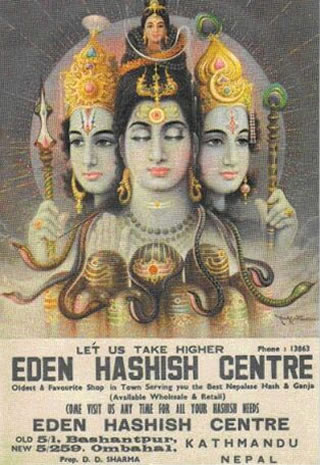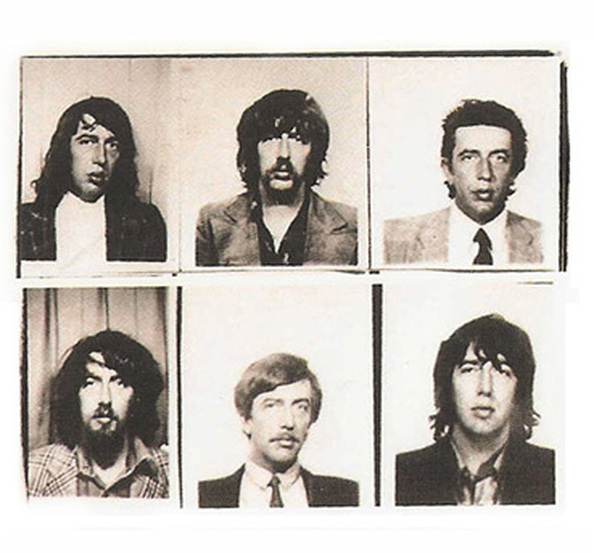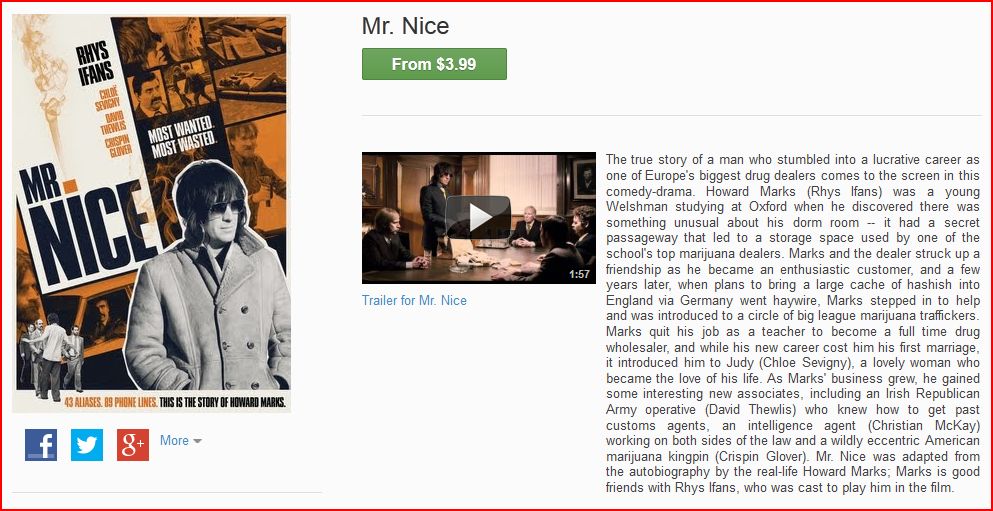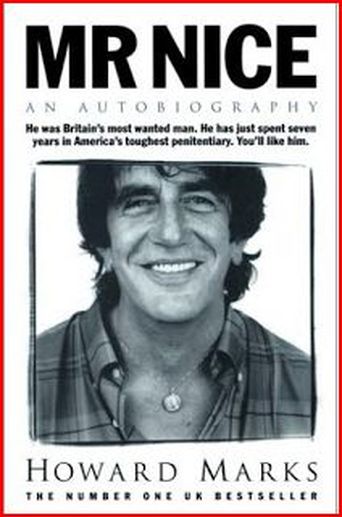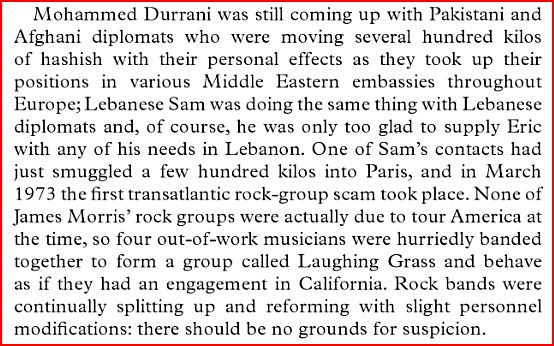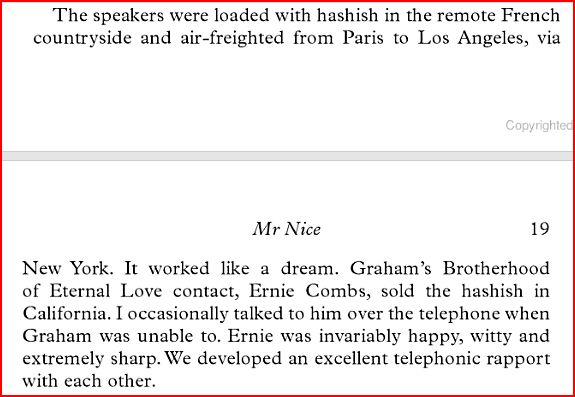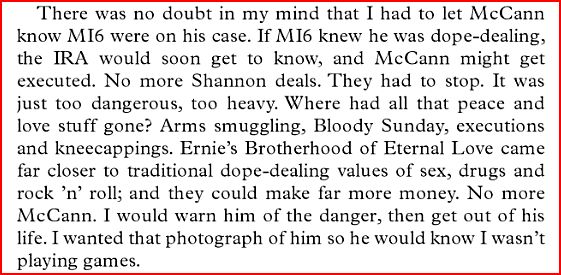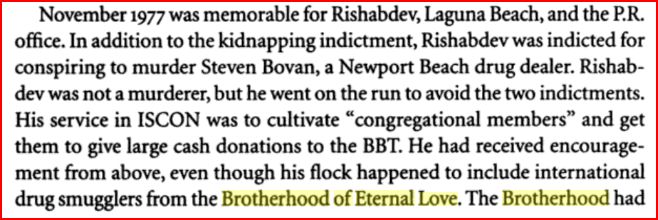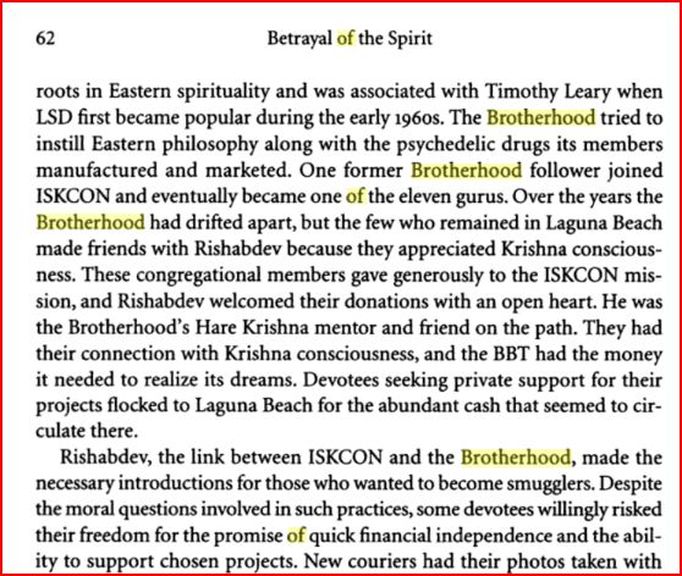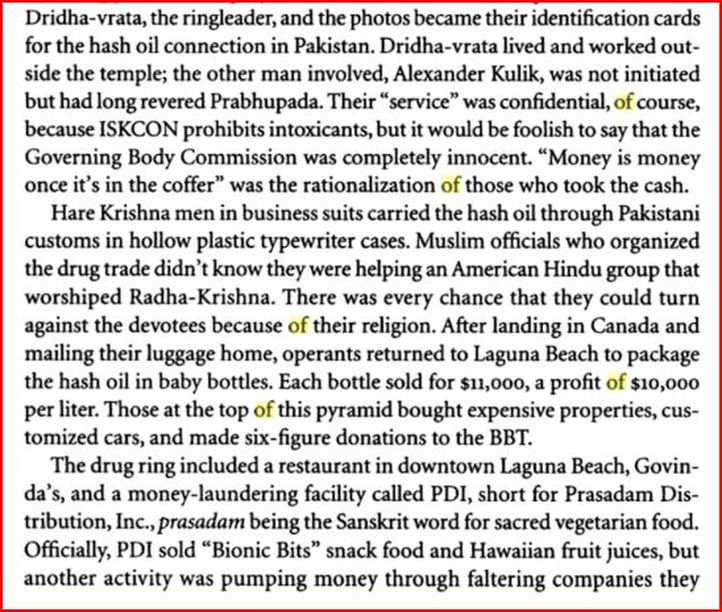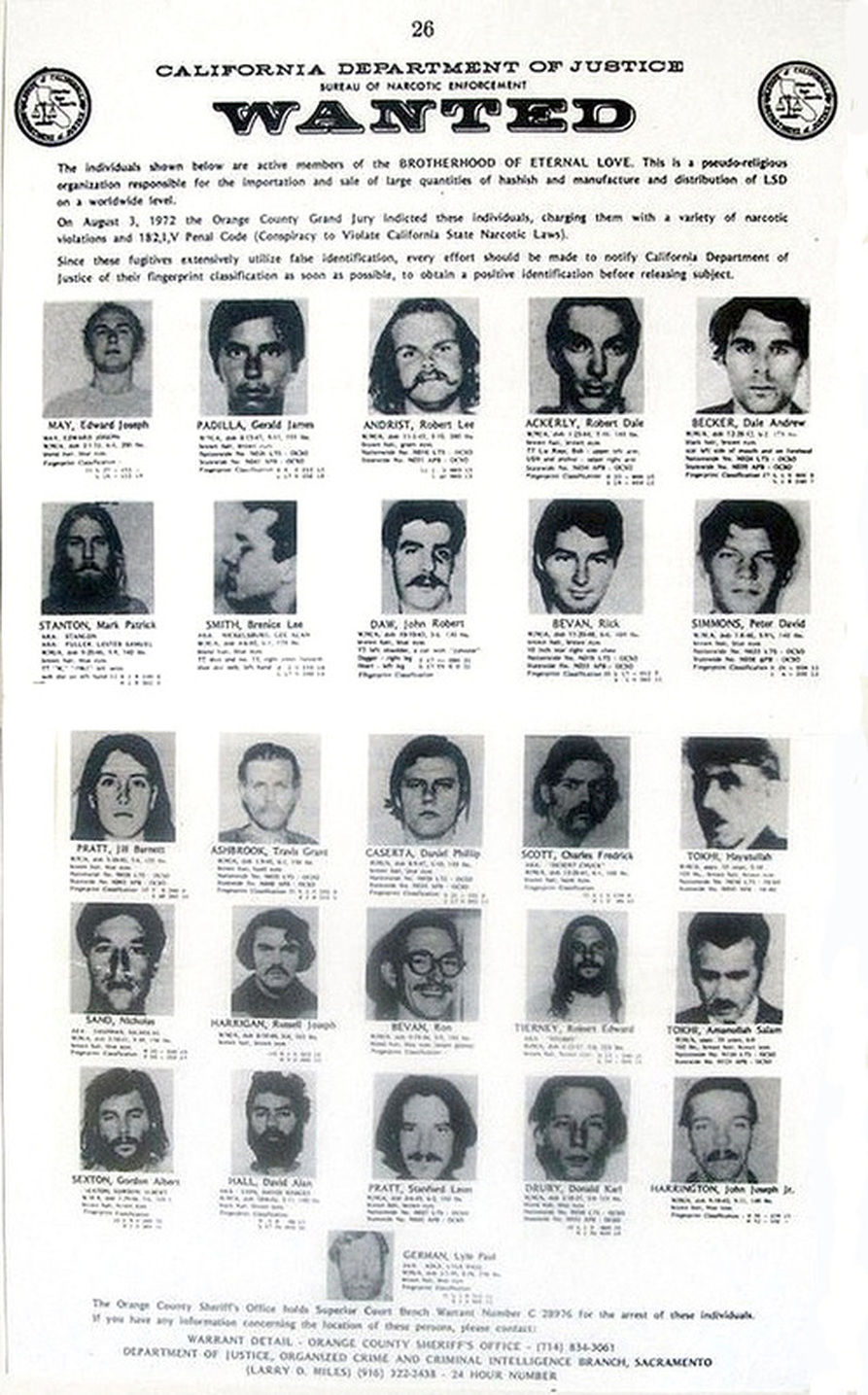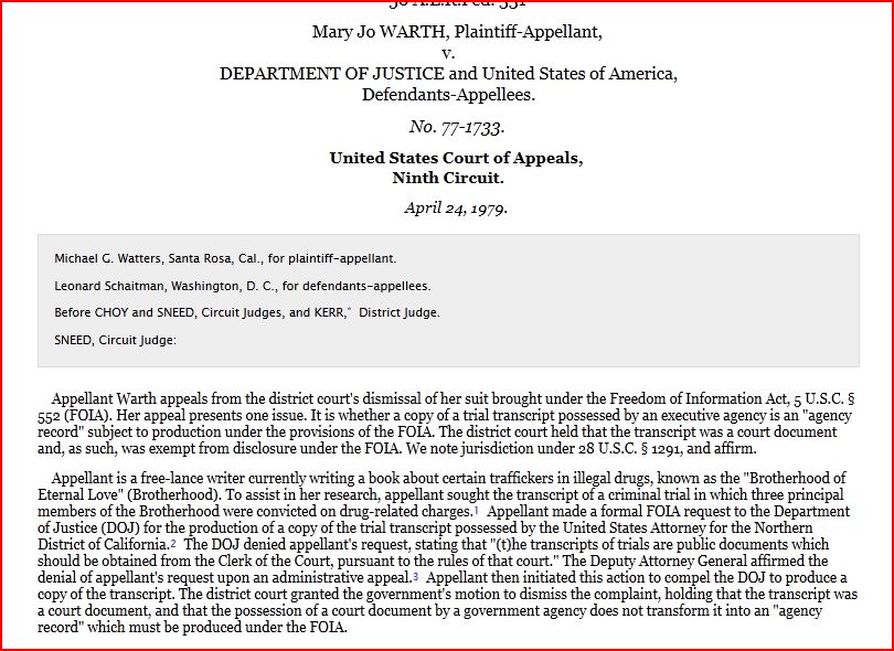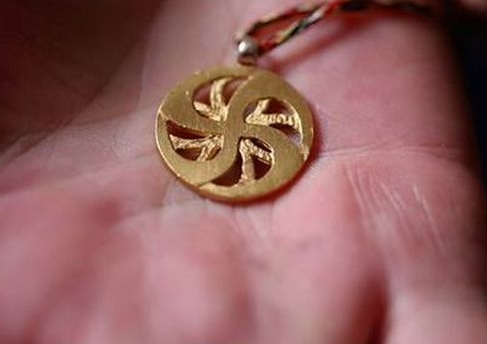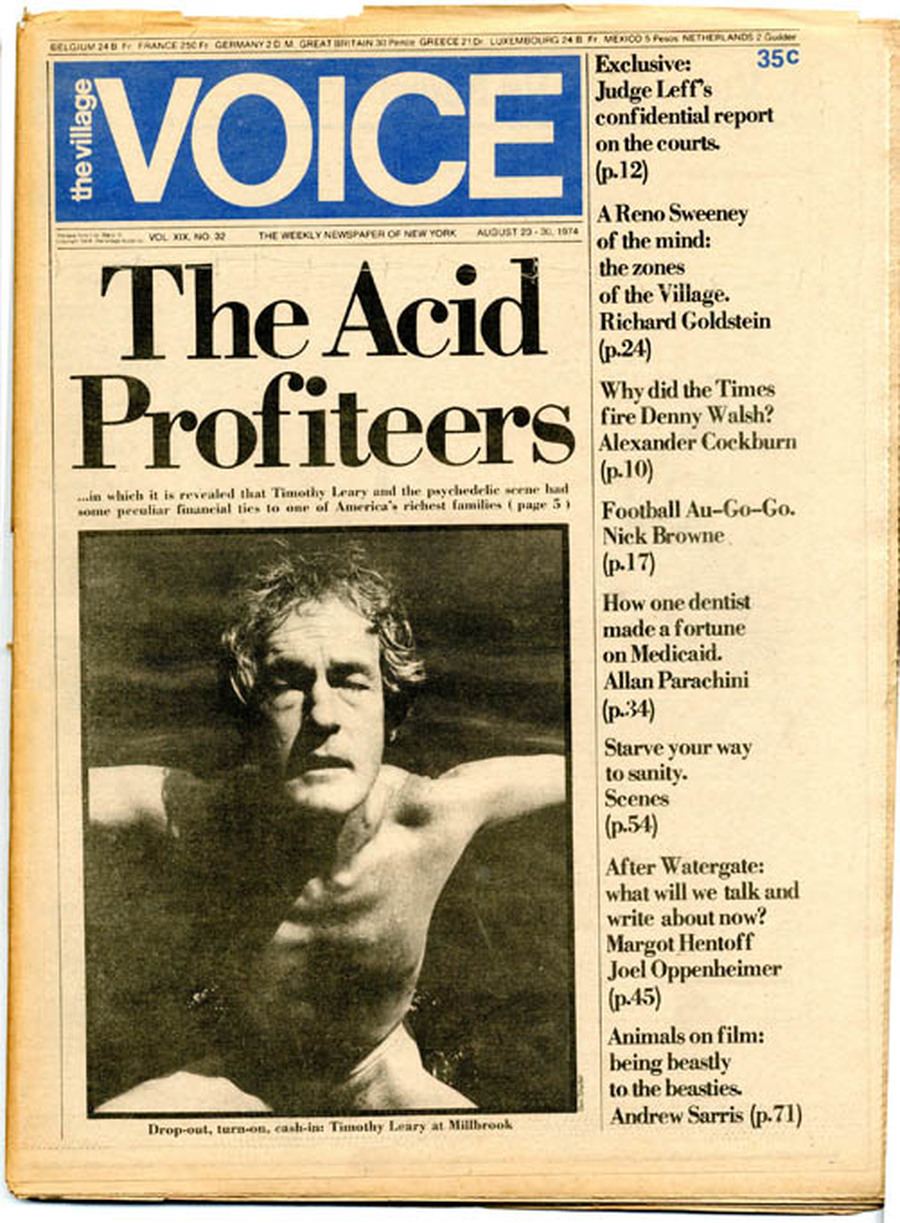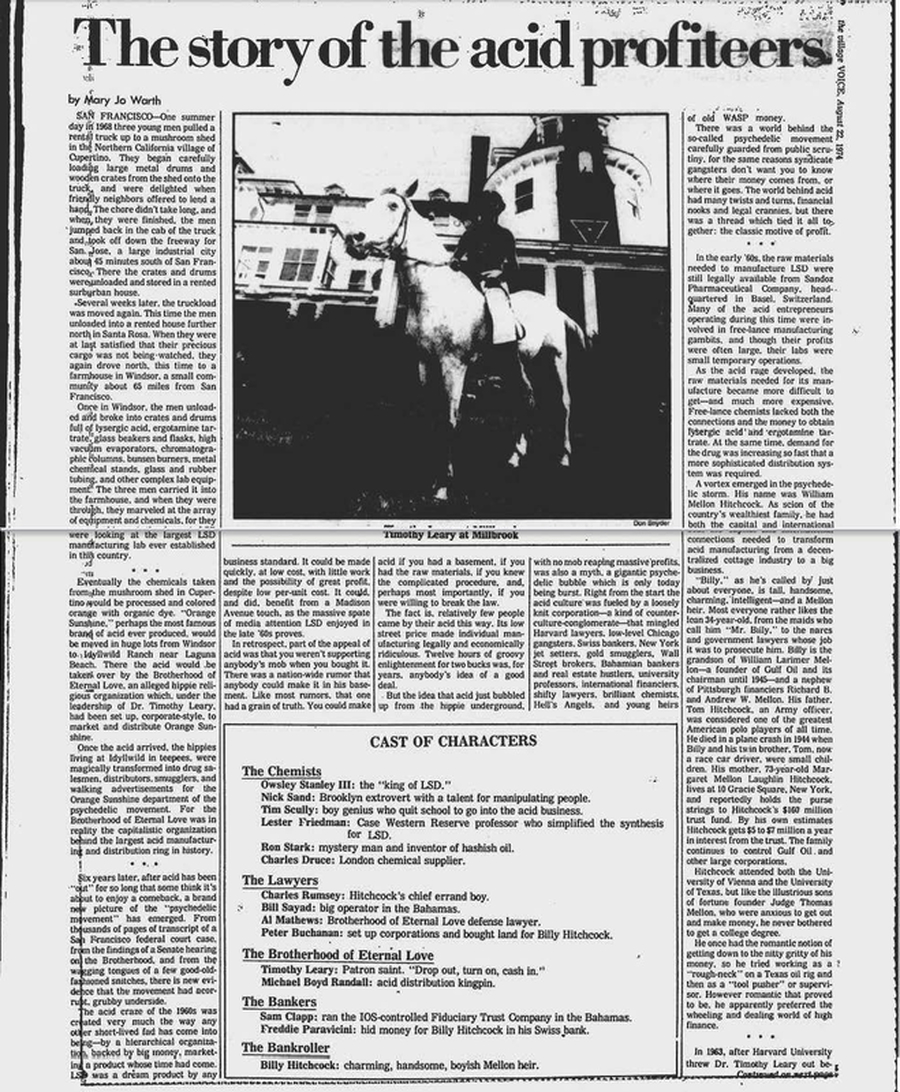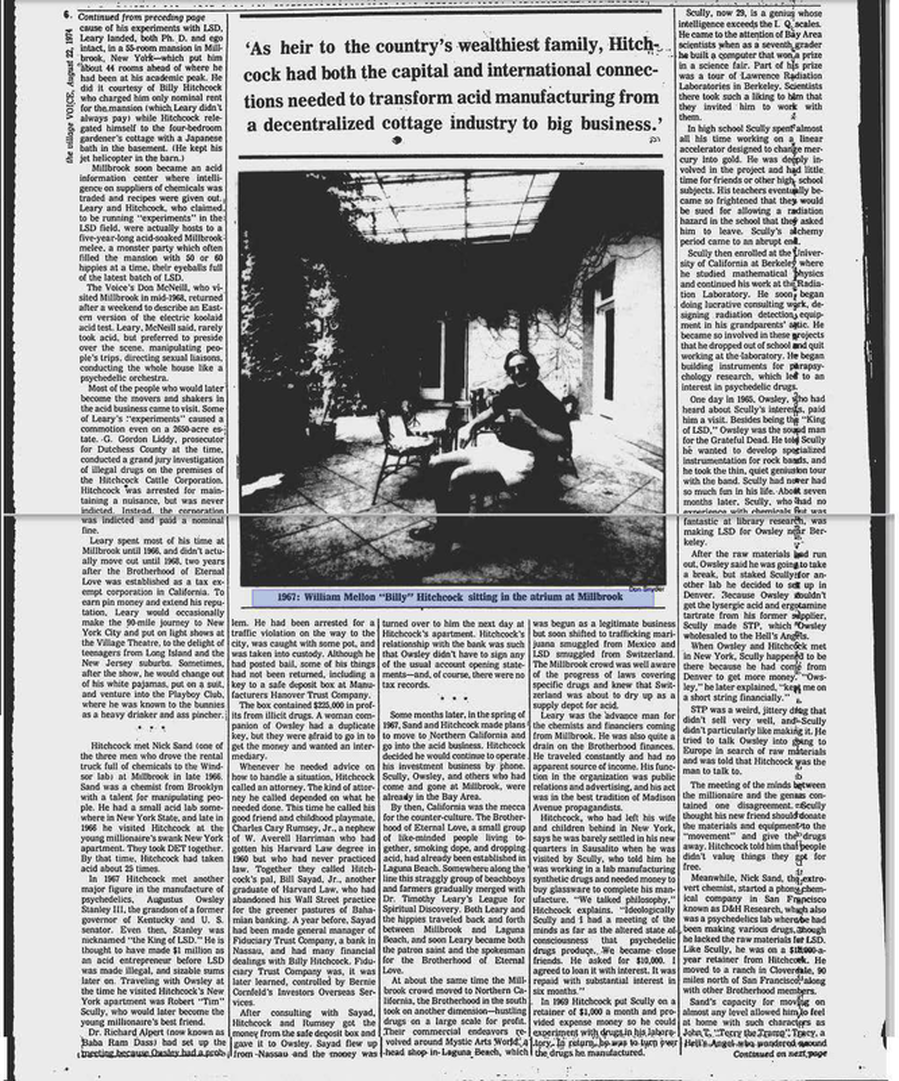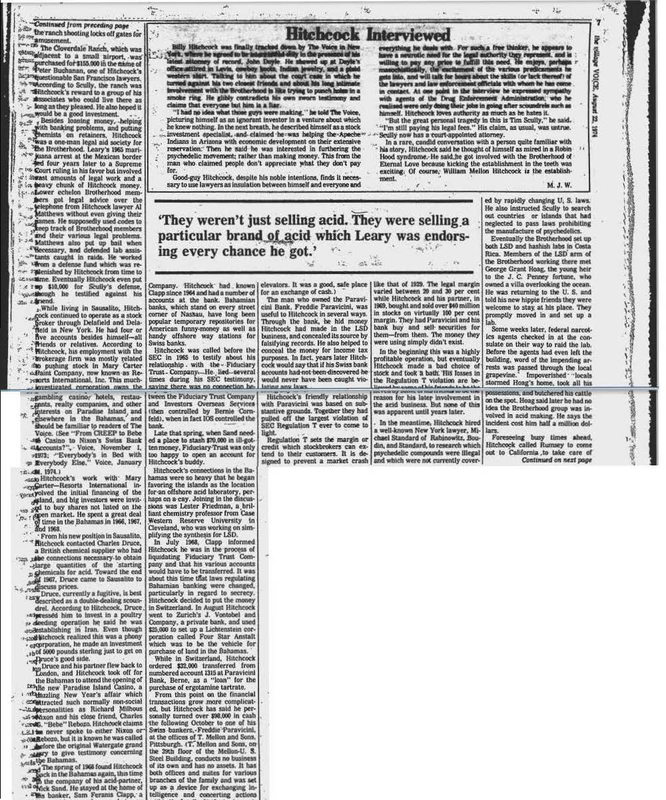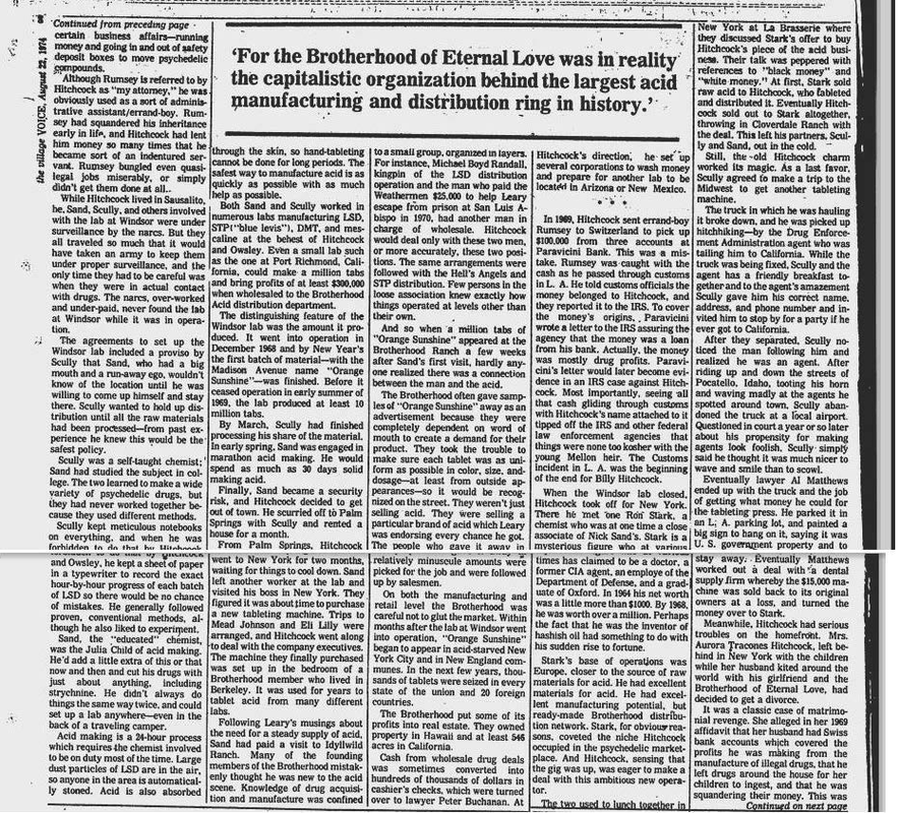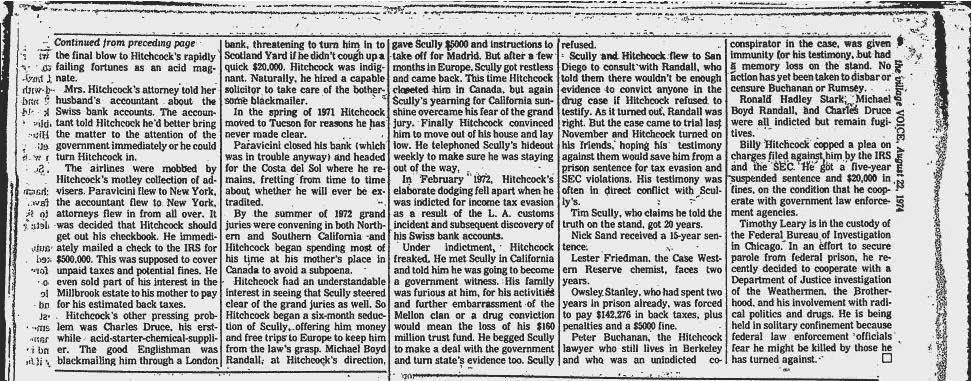SMOKE SIGNALS
Hash Smuggling
Smuggler's Blues / True Crime
Tokhi Brother
The Great Dope Opera
Since the dawn of organized agriculture, farmers have traded quality seeds to ensure better harvests. In the United States, hippie folklore places the beginnings of American cannabis breeding for seeds in the early 1960s. Later, the smuggling organization known as the Brotherhood of Eternal Love brought cannabis seeds back from Afghanistan, Nepal and other stops on the Hippie Trail.
Powell (1990) discusses in regard to the advantages of network organizations: “Networks
are ‘lighter on their feet” than hierarchies. In network modes of resource allocation, transactions
occur neither through discrete exchanges nor by administrative fiat, but through networks of
individuals engaged in reciprocal, preferential, mutually supportive actions. Networks can be
complex: they involve neither the explicit criteria of the market, nor the familiar paternalism of
the hierarchy. The basic assumption of network relationships is that one party is dependent on
resources controlled by another, and that there are gains to be had by the pooling of resources”
(p.303). Powell continues in elaborating the specific advantage(s) of the network structure by
telling us that “[n]etworks are particularly apt for circumstances in which there is need for
efficient, reliable information. The most useful information is rarely that which flows down the
formal chain of command in an organization, or that which can be inferred from shifting price
signals. Rather, it is that which is obtained from someone whom you have dealt with in the past
and found to be reliable. You trust best information that comes from someone you know well”
(p.304).
are ‘lighter on their feet” than hierarchies. In network modes of resource allocation, transactions
occur neither through discrete exchanges nor by administrative fiat, but through networks of
individuals engaged in reciprocal, preferential, mutually supportive actions. Networks can be
complex: they involve neither the explicit criteria of the market, nor the familiar paternalism of
the hierarchy. The basic assumption of network relationships is that one party is dependent on
resources controlled by another, and that there are gains to be had by the pooling of resources”
(p.303). Powell continues in elaborating the specific advantage(s) of the network structure by
telling us that “[n]etworks are particularly apt for circumstances in which there is need for
efficient, reliable information. The most useful information is rarely that which flows down the
formal chain of command in an organization, or that which can be inferred from shifting price
signals. Rather, it is that which is obtained from someone whom you have dealt with in the past
and found to be reliable. You trust best information that comes from someone you know well”
(p.304).
It was Hynson who gave Griggs another idea to ‘raise money': Why not use surfboards to smuggle hash from the Middle East or India? – he thought, nobody knew anything about surfing in India, so customs wouldn’t know the difference if a surfboard weighed 20 or 30 pounds more than it should.
Hynson suggested the idea to Griggs’ friend Dave Hall, who promptly borrowed a board and set off for Nepal, returning a few weeks later with the board and the best hash anyone in Laguna Beach had ever smoked.
Beginning in 1967 and expanding over the course of the next several years, the Brotherhood became not only America’s biggest acid distribution network (for the CIA and MKUltra) but also the nation’s most prodigious group of hashish smugglers.
Brotherhood smugglers flew to Europe; purchased Volkswagen buses, Land Rovers and other vehicles; drove them overland to Kandahar, Afghanistan—later to become the birthplace of the Taliban (another ‘gift’ to humanity from British and American intelligence) —and then shipped them home to California from Karachi, Pakistan.
During the next several years, the Brotherhood of Eternal Love was shipping up to a dozen hash-stuffed Volkswagen buses and Land Rovers being from Afghanistan at any given moment.
Kandahar is one of the 34 provinces of Afghanistan and is located close to Pakistan.
Mr. Bartels. At some point late in 1967 or early 1968. members of the brotherhood developed their most important foreign contact for hashish.
According to subsequent indictment, this was the Tokhi brothers who reside in Afghanistan on the outskirts of Kabul, its capital city.
- Hashish smuggling and passport fraud : ”the brotherhood of eternal love” : hearing before the Subcommittee to Investigate the Administration of the Internal Security Act and Other Internal Security Laws of the Committee on the Judiciary, United States Senate, Ninety-third Congress, first session, October 3, 1973 .
Brotherhood smugglers developed elaborate and successful means of getting the hashish into the United States. One of their earlier techniques was to hide quantities of 15 to 20 pounds of the drug within the interiors of fiberglass surfboards which they manufactured.
They began by smuggling the hashish inside of surfboards, the idea of Brotherhood member Mike Hynson, as mentioned earlier.
Aman Tokhi, the Brotherhood’s chief supplier in Kabul, also worked as a janitor at the U.S. Embassy, although he referred to his position as ‘maintenance supervisor’.
It’s 2 a.m. in New Delhi [India], halfway through a hot night in August 1967, and Mike Hynson is still awake and sweating in his hotel room.
Using a spoon he borrowed from the hotel restaurant, Hynson has carved a giant chunk of foam out of the bottom of one of the boards he’d delivered to India a few weeks earlier. He’s filled the hole with a watertight bag of hashish oil that he and a friend from Laguna Beach obtained in Kathmandu. He seals the compartment shut with carefully concealed tape and resin. – they are sent to california
- Orange County Weekly article, July 9, 2009 .
From the Congressional Hearings –
[…]
Mr. Sinclair. But, that was not enough; and in the latter part of 1967, Glenn Lynd and two other brotherhood members traveled to Afghanistan in search of a permanent source of supply for brotherhood hashish.
Mr. Sourwine. That is Glenn Lynd, L-y-n-d ?
Mr. Sinclair. That is correct, sir. They purchased 125 pounds of high-quality Afghanistan hashish from their suppliers in Afghanistan for $15 a pound and smuggled it back into California where they sold it for $900 a pound. This was to be the first 125 pounds of nearly 24 tons of hashish smuggled into the United States from Afghanistan, Lebanon, and India by the Brotherhood of Eternal Love.
- Hashish smuggling and passport fraud : ”the brotherhood of eternal love” : hearing before the Subcommittee to Investigate the Administration of the Internal Security Act and Other Internal Security Laws of the Committee on the Judiciary, United States Senate, Ninety-third Congress, first session, October 3, 1973 Other references regarding the Tokhi Brothers:
Glenn Lynd had CIA connections, probably through either Ashbrook or Bevan, that helped ‘find’ the Tokhi brothers in the first place, accordingly, Lynd was later used to bust-up the Brotherhood.
Lynd’s partner in this first smuggling trip to Afghanistan was Brenice Lee Smith.
Testifying under oath, Lynd described how he and Smith had flown to Germany, purchased a Volkswagen van and driven it to Kandahar, where they met up with Tokhi brothers who had just previously supplied Brotherhood men Rick Bevan and Travis Ashbrook.
By the time they got to Kandahard, however, Lynd was sick with dysentery, and flat broke. Ashbrook flew to Kandahar, and sent Lynd home wearing a jacket lined with hash and instructions to sell the drug to a trusted friend and wire the proceeds to Karachi, where Ashbrook used the cash to ship the Volkswagen to Los Angeles.
Lynd did as instructed, and shortly after Ashbrook and Smith flew home, the Volkswagen, along with a few hundred pounds of hash, arrived safely at the Port of Los Angeles. They circumvented inspection and drove straight to a safe house in the desert where they unloaded the hash.
Reference – Distant Karma Catches up with Brotherhood’s Brenice Lee Smith, December 10, 2009
The rugged routes to Kabul teemed with worldwide youth in search of cheap drugs and enlightenment. With the idyllic dreamers came hard core criminals. Sent to Kabul to take on the criminals was Federal Narcotics Agent, Terrence Burke. Working undercover, often without backup, Burke dismantled smuggling operations in Afghanistan and India. He used “renditions” to return fugitives like Timothy Leary from Afghanistan to the U.S. and teamed with the Soviet KGB to close a drug route through the USSR. He challenged criminals in the Royal Palace and the Afghan Police. The issues he portrays in Afghanistan are still confronting us today.
https://mikemcclaughry.wordpress.com/2015/03/27/old-charles-manson-articles-more-about-scientologys-drug-and-cia-connections/
Hynson suggested the idea to Griggs’ friend Dave Hall, who promptly borrowed a board and set off for Nepal, returning a few weeks later with the board and the best hash anyone in Laguna Beach had ever smoked.
Beginning in 1967 and expanding over the course of the next several years, the Brotherhood became not only America’s biggest acid distribution network (for the CIA and MKUltra) but also the nation’s most prodigious group of hashish smugglers.
Brotherhood smugglers flew to Europe; purchased Volkswagen buses, Land Rovers and other vehicles; drove them overland to Kandahar, Afghanistan—later to become the birthplace of the Taliban (another ‘gift’ to humanity from British and American intelligence) —and then shipped them home to California from Karachi, Pakistan.
During the next several years, the Brotherhood of Eternal Love was shipping up to a dozen hash-stuffed Volkswagen buses and Land Rovers being from Afghanistan at any given moment.
Kandahar is one of the 34 provinces of Afghanistan and is located close to Pakistan.
Mr. Bartels. At some point late in 1967 or early 1968. members of the brotherhood developed their most important foreign contact for hashish.
According to subsequent indictment, this was the Tokhi brothers who reside in Afghanistan on the outskirts of Kabul, its capital city.
- Hashish smuggling and passport fraud : ”the brotherhood of eternal love” : hearing before the Subcommittee to Investigate the Administration of the Internal Security Act and Other Internal Security Laws of the Committee on the Judiciary, United States Senate, Ninety-third Congress, first session, October 3, 1973 .
Brotherhood smugglers developed elaborate and successful means of getting the hashish into the United States. One of their earlier techniques was to hide quantities of 15 to 20 pounds of the drug within the interiors of fiberglass surfboards which they manufactured.
They began by smuggling the hashish inside of surfboards, the idea of Brotherhood member Mike Hynson, as mentioned earlier.
Aman Tokhi, the Brotherhood’s chief supplier in Kabul, also worked as a janitor at the U.S. Embassy, although he referred to his position as ‘maintenance supervisor’.
It’s 2 a.m. in New Delhi [India], halfway through a hot night in August 1967, and Mike Hynson is still awake and sweating in his hotel room.
Using a spoon he borrowed from the hotel restaurant, Hynson has carved a giant chunk of foam out of the bottom of one of the boards he’d delivered to India a few weeks earlier. He’s filled the hole with a watertight bag of hashish oil that he and a friend from Laguna Beach obtained in Kathmandu. He seals the compartment shut with carefully concealed tape and resin. – they are sent to california
- Orange County Weekly article, July 9, 2009 .
From the Congressional Hearings –
[…]
Mr. Sinclair. But, that was not enough; and in the latter part of 1967, Glenn Lynd and two other brotherhood members traveled to Afghanistan in search of a permanent source of supply for brotherhood hashish.
Mr. Sourwine. That is Glenn Lynd, L-y-n-d ?
Mr. Sinclair. That is correct, sir. They purchased 125 pounds of high-quality Afghanistan hashish from their suppliers in Afghanistan for $15 a pound and smuggled it back into California where they sold it for $900 a pound. This was to be the first 125 pounds of nearly 24 tons of hashish smuggled into the United States from Afghanistan, Lebanon, and India by the Brotherhood of Eternal Love.
- Hashish smuggling and passport fraud : ”the brotherhood of eternal love” : hearing before the Subcommittee to Investigate the Administration of the Internal Security Act and Other Internal Security Laws of the Committee on the Judiciary, United States Senate, Ninety-third Congress, first session, October 3, 1973 Other references regarding the Tokhi Brothers:
- Nick Schou Thu, Dec 03, 2009 3:36 pm
Glenn Lynd had CIA connections, probably through either Ashbrook or Bevan, that helped ‘find’ the Tokhi brothers in the first place, accordingly, Lynd was later used to bust-up the Brotherhood.
Lynd’s partner in this first smuggling trip to Afghanistan was Brenice Lee Smith.
Testifying under oath, Lynd described how he and Smith had flown to Germany, purchased a Volkswagen van and driven it to Kandahar, where they met up with Tokhi brothers who had just previously supplied Brotherhood men Rick Bevan and Travis Ashbrook.
By the time they got to Kandahard, however, Lynd was sick with dysentery, and flat broke. Ashbrook flew to Kandahar, and sent Lynd home wearing a jacket lined with hash and instructions to sell the drug to a trusted friend and wire the proceeds to Karachi, where Ashbrook used the cash to ship the Volkswagen to Los Angeles.
Lynd did as instructed, and shortly after Ashbrook and Smith flew home, the Volkswagen, along with a few hundred pounds of hash, arrived safely at the Port of Los Angeles. They circumvented inspection and drove straight to a safe house in the desert where they unloaded the hash.
Reference – Distant Karma Catches up with Brotherhood’s Brenice Lee Smith, December 10, 2009
The rugged routes to Kabul teemed with worldwide youth in search of cheap drugs and enlightenment. With the idyllic dreamers came hard core criminals. Sent to Kabul to take on the criminals was Federal Narcotics Agent, Terrence Burke. Working undercover, often without backup, Burke dismantled smuggling operations in Afghanistan and India. He used “renditions” to return fugitives like Timothy Leary from Afghanistan to the U.S. and teamed with the Soviet KGB to close a drug route through the USSR. He challenged criminals in the Royal Palace and the Afghan Police. The issues he portrays in Afghanistan are still confronting us today.
https://mikemcclaughry.wordpress.com/2015/03/27/old-charles-manson-articles-more-about-scientologys-drug-and-cia-connections/
'The dope dealer is selling you the celestial dream. He is very different from any other merchant because the commodity he is peddling is freedom and joy. In the years to come the television dramas and movies will make a big thing of the dope dealer of the sixties. He is going to be the Robin Hood, spiritual guerrilla, mysterious agent - who will take the place of the cowboy hero or the cops and robbers hero.' (Timothy Leary, 'Dope Dealers - New Robin Hood', 1967)
Stay High & Love God
http://www.redpepper.org.uk/smoking-the-celestial-dream/
Even the dealers got in on the act, pushing quasi-mystical ideals along with the pot. There was a time when it seemed they all claimed to belong to the Brotherhood of Eternal Love, a group of drug-smugglers who saw dope dealing as something of a divine duty and who once paid the Weathermen $25,000 to smuggle Timothy Leary, who had recently escaped from jail, out of the country. Their slogan, 'Stay high and love God', became the false motto of every bent penny-ha'penny pusher west of Kashmir.
In reality the Brotherhood never numbered more than a dozen or so wild-idealed Californian freaks, but they added a whole chapter to the mythology of dope. In the words of Timothy Leary: 'I can flatly say that the holiest, handsomest, healthiest, horniest, humorest, most saintly group of men I have met in my life are the dope dealers ... I think it is necessary that at some time in your spiritual, psychedelic career you do deal. Not for the money but simply to pay tribute to this most honorable profession.'
Stay High & Love God
http://www.redpepper.org.uk/smoking-the-celestial-dream/
Even the dealers got in on the act, pushing quasi-mystical ideals along with the pot. There was a time when it seemed they all claimed to belong to the Brotherhood of Eternal Love, a group of drug-smugglers who saw dope dealing as something of a divine duty and who once paid the Weathermen $25,000 to smuggle Timothy Leary, who had recently escaped from jail, out of the country. Their slogan, 'Stay high and love God', became the false motto of every bent penny-ha'penny pusher west of Kashmir.
In reality the Brotherhood never numbered more than a dozen or so wild-idealed Californian freaks, but they added a whole chapter to the mythology of dope. In the words of Timothy Leary: 'I can flatly say that the holiest, handsomest, healthiest, horniest, humorest, most saintly group of men I have met in my life are the dope dealers ... I think it is necessary that at some time in your spiritual, psychedelic career you do deal. Not for the money but simply to pay tribute to this most honorable profession.'
Lynd at Whaleshead Beach, 1968;
Lynd turned state's evidence.
Lynd turned state's evidence.
Betrayal of the Spirit: My Life behind the Headlines of the Hare Krishna ... By Nori J. Muster
https://books.google.com/books?id=z3uoAgAAQBAJ&pg=PA62&lpg=PA62&dq=brotherhood,+laguna+beach&source=bl&ots=xx75ZP4oPv&sig=uTOQymYEiC16JIQsZ6GrMUiEVMI&hl=en&sa=X&ei=M6Y5VcHmOobvtQW69YGYDQ&ved=0CGMQ6AEwDDgK#v=onepage&q=brotherhood%2C%20laguna%20beach&f=false
https://books.google.com/books?id=z3uoAgAAQBAJ&pg=PA62&lpg=PA62&dq=brotherhood,+laguna+beach&source=bl&ots=xx75ZP4oPv&sig=uTOQymYEiC16JIQsZ6GrMUiEVMI&hl=en&sa=X&ei=M6Y5VcHmOobvtQW69YGYDQ&ved=0CGMQ6AEwDDgK#v=onepage&q=brotherhood%2C%20laguna%20beach&f=false
Smuggler's Blues Lyrics - Glenn Frey
|
There's trouble on the streets tonight,
I can feel it in my bones. I had a premonition, That he should not go alone. I knew the gun was loaded, But I didn't think he'd kill. Everything exploded, And the blood began to spill. So baby, here's your ticket, Put the suitcase in your hand. Here's a little money now, Do it just the way we planned. You be cool for twenty hours And I'll pay you twenty grand. I'm sorry it went down like this, And someone had to lose, It's the nature of the business, It's the smuggler's blues. Smuggler's Blues The sailors and pilots, The soldiers and the law, The pay offs and the rip offs, And the things nobody saw. No matter if it's heroin, cocaine, or hash, You've got to carry weapons Cause you always carry cash. There's lots of shady characters, Lots of dirty deals. Ev'ry name's an alias In case somebody squeals. It's the lure of easy money, It's gotta very strong appeal. Perhaps you'd understand it better Standin' in my shoes, It's the ultimate enticement, It's the smuggler's blues, Smuggler's blues. |
See it in the headlines,
You hear it ev'ry day. They say they're gonna stop it, But it doesn't go away. They move it through Miami, sell it in L.A., They hide it up in Telluride, I mean it's here to stay. It's propping up the governments in Colombia and Peru, You ask any D.E.A. man, He'll say There's nothin' we can do, From the office of the President, Right down to me and you, me and you. It's a losing proposition, But one you can't refuse. It's the politics of contraband, It's the smuggler's blues, Smuggler's blues. Perhaps you'd understand it better Standin' in my shoes, It's the ultimate enticement, It's the smuggler's blues, Smuggler's blues. See it in the headlines, You hear it ev'ry day. They say they're gonna stop it, But it doesn't go away. They move it through Miami, sell it in L.A., They hide it up in Telluride, I mean it's here to stay. It's propping up the governments in Colombia and Peru, You ask any D.E.A. man, He'll say There's nothin' we can do, From the office of the President, Right down to me and you, me and you. It's a losing proposition, But one you can't refuse. It's the politics of contraband, It's the smuggler's blues, Smuggler's blues. |
SO, Who's a Brother, Anyway?
How a Bunch of Nobodies Became Anybodies
Beware of Revisionist or Alt.Histories
Just because someone said it doesn't make it so.
When it comes to the notion of Brotherhood, there is the specific and general. Part of the zeitgeist of the times was promoting love and universal brotherhood among adherents of different religions and cults. Such ideas piggybacked on Theosophical notions such as an 'unseen Brotherhood' of spiritual superbeings who worked behind the scenes for the alleged benefit of mankind.
Brotherhood was part of the Utopian cultural dream of a better world still in the midst of the Cold War and a hot war in Viet Nam, where the young peer group was being culled by the Powers That Be. Psychedelic drugs opened the doors of perception to personal heavens and hells. While many enjoyed the drug trips, others raised the question, "Great -- now how do I do this without drugs?" They found an eternal value in the concept of Brotherhood.
A multitude of people have either claimed to be or been accused of being 'members' of the Brotherhood of Eternal Love. Despite false characterizations and logical or illogical conclusions that doesn't necessarily make it so. Some were just self-deluded individuals trying to write themselves into the exciting story, while other claims had a stronger fact-based reality. With each incident of smuggling or other operations, people floated in and out of the story while the rumor-mill ground away.
At the time of its inception there was a general "Brotherhood Movement" that was universal in its meaning and required no membership, association, nor approval. It was just a utopian dream of world-brotherhood -- another cultural buzzword like the sexual revolution, peace movement, or women's movement.
So, anyone could claim to be part of such a Brotherhood, exemplified by the ubiquitous address, "Bro". Loose association with the Brotherhood in Laguna or elsewhere never 'made' one a Brother. But, some dope dealer peddiling drugs in the suburbs of Chicago might try to pass himself and his product off as part of the elite chain. Or someone who took Orange Sunshine at a rock festival might imagine themselves as a cosmic brother.
But the Brothers themselves, largely friends from their high school days, clearly distinguished between their inner circle of trust and the downwinders in their self-organizing distribution network. One original brother even characterizes Laguna surfer John Gale as little more than a dealer for the Brotherhood, rather than a core member. Naturally, the police and the Feds made no such fine distinctions when plotting raids on suspected dealers.
So, a whole host of "downwinders" appeared whose only connection to any Brotherhood was a temporary link in the distribution chain that delivered their products at the street level. So, at the time or more likely in retrospect as the 'Hippie Mafia' did not become notorious until after the '73 raids, they could self-appoint themselves as part of the Brotherhood merely by bragging, but that doesn't make it so despite narcissistic talk or self-delusions. The most that could be said about such cadres is that they foreshadowed the "cell-system" of criminal networks.
This doesn't implicate the Brotherhood itself in other group or individual enterprises or criminal activities. So, all such revisionist histories and idiosyncratic notions must be taken with a big grain of salt, being largely the concoctions of self-styled writers and talking-heads trying to increase their fan-bases. Many paint their findings with a broad brush. Several of the connections attributed to the Brotherhood were actually only those of single participants, like the notorious Ronald Stark who entered the scene in 1969 with his world-wide drug-running and money-laundering expertise. http://www.brainsturbator.com/posts/188/ronald-hadley-stark-the-man-behind-the-lsd-curtain
Being the time and place it was the Brotherhood wound up associated with many other spiritual and non-spiritual organizations and cults that may or may not have helped in smuggling or peddling their wares. The most notorious include Scientology, the Process Church, ISKON (Hare Krishnas), the Manson Family, and others. In the same era Muktananda's group was accused of gun-running by the Feds.
Lots of cults, gangs, and intelligence groups had their own agendas and money-making schemes. Individual seekers were looking to drugs, spiritual groups, and cults to fulfill their quests for something higher. Many individuals floated into and out of several groups for short periods of time, often leaving disenchanted with what they found.
There is a revisionist history wave now in progress that attempts to link the Brotherhood name with the scandals of other groups in some sort of connect-the-dots "guilt-by-association". In the same era, selling the drug products of the Hell's Angels didn't make anyone doing so a Hell's Angel, and the same applies to the Brotherhood, and their much more loosely applied name. Such allegations become little more than gossip and rumor. Lots of fringe groups competed for the hearts, minds, and pocketbooks of witting and unwitting seekers. In the end it wasn't about dope or God, but power and greed.
If these extraneous groups perpetrated crimes from murder to mind control to extortion to gun running, etc. the Brotherhood itself had little or no knowledge of such activities much less any collaboration or control within them. Even the government found it had to make their cases as they were based on little more than innuendo. It was easier to make charges of 'passport fraud' stick than any grand international plots. In fact, a string of loosely organized networks, each with only a knowledge of its own enterprise compounded that difficulty.
But when you try to ferret out the actual evidence there is slim to none to link the other groups with core Brotherhood activities. Most likely they had little or no knowledge of dealers' extraneous activities or agendas. Usually, so-called connections consist of conspiring with a single person who was never a 'Brother' to begin with.
So, street dealing hash, hash oil, and Orange Sunshine, or even perhaps making a single smuggling run at some point in the distribution chain didn't make one a 'Brother' -- but simply another dealer trying to take on some of the mystique of those who started the core movement. The numbers of such claimants are incalculable though the feds accused about 750 people in the Brotherhood distribution chain. The Feds might have labelled people part of the Brotherhood who never considered themselves so.
Whatever it might mean, true 'brotherhood' among the group was a top-down determined inclusion, not a bottom-up self-appointed position with any meaning beyond one's own fantasies. Dealing the drugs didn't make one a Brother, any more than taking those drugs. The most you can say is as a movement it was all-inclusive, which implicates the whole counterculture.
Things always look different from the inside out. Trying to attach the Brotherhood name to other notorious groups is little more than modern day witch hunting or attention-seeking behavior. Since many of those involved are dead it is mostly conjecture and empty allegations -- or worse, like out-dated and misinformed government investigative papers that were skewed toward their own ends.
How a Bunch of Nobodies Became Anybodies
Beware of Revisionist or Alt.Histories
Just because someone said it doesn't make it so.
When it comes to the notion of Brotherhood, there is the specific and general. Part of the zeitgeist of the times was promoting love and universal brotherhood among adherents of different religions and cults. Such ideas piggybacked on Theosophical notions such as an 'unseen Brotherhood' of spiritual superbeings who worked behind the scenes for the alleged benefit of mankind.
Brotherhood was part of the Utopian cultural dream of a better world still in the midst of the Cold War and a hot war in Viet Nam, where the young peer group was being culled by the Powers That Be. Psychedelic drugs opened the doors of perception to personal heavens and hells. While many enjoyed the drug trips, others raised the question, "Great -- now how do I do this without drugs?" They found an eternal value in the concept of Brotherhood.
A multitude of people have either claimed to be or been accused of being 'members' of the Brotherhood of Eternal Love. Despite false characterizations and logical or illogical conclusions that doesn't necessarily make it so. Some were just self-deluded individuals trying to write themselves into the exciting story, while other claims had a stronger fact-based reality. With each incident of smuggling or other operations, people floated in and out of the story while the rumor-mill ground away.
At the time of its inception there was a general "Brotherhood Movement" that was universal in its meaning and required no membership, association, nor approval. It was just a utopian dream of world-brotherhood -- another cultural buzzword like the sexual revolution, peace movement, or women's movement.
So, anyone could claim to be part of such a Brotherhood, exemplified by the ubiquitous address, "Bro". Loose association with the Brotherhood in Laguna or elsewhere never 'made' one a Brother. But, some dope dealer peddiling drugs in the suburbs of Chicago might try to pass himself and his product off as part of the elite chain. Or someone who took Orange Sunshine at a rock festival might imagine themselves as a cosmic brother.
But the Brothers themselves, largely friends from their high school days, clearly distinguished between their inner circle of trust and the downwinders in their self-organizing distribution network. One original brother even characterizes Laguna surfer John Gale as little more than a dealer for the Brotherhood, rather than a core member. Naturally, the police and the Feds made no such fine distinctions when plotting raids on suspected dealers.
So, a whole host of "downwinders" appeared whose only connection to any Brotherhood was a temporary link in the distribution chain that delivered their products at the street level. So, at the time or more likely in retrospect as the 'Hippie Mafia' did not become notorious until after the '73 raids, they could self-appoint themselves as part of the Brotherhood merely by bragging, but that doesn't make it so despite narcissistic talk or self-delusions. The most that could be said about such cadres is that they foreshadowed the "cell-system" of criminal networks.
This doesn't implicate the Brotherhood itself in other group or individual enterprises or criminal activities. So, all such revisionist histories and idiosyncratic notions must be taken with a big grain of salt, being largely the concoctions of self-styled writers and talking-heads trying to increase their fan-bases. Many paint their findings with a broad brush. Several of the connections attributed to the Brotherhood were actually only those of single participants, like the notorious Ronald Stark who entered the scene in 1969 with his world-wide drug-running and money-laundering expertise. http://www.brainsturbator.com/posts/188/ronald-hadley-stark-the-man-behind-the-lsd-curtain
Being the time and place it was the Brotherhood wound up associated with many other spiritual and non-spiritual organizations and cults that may or may not have helped in smuggling or peddling their wares. The most notorious include Scientology, the Process Church, ISKON (Hare Krishnas), the Manson Family, and others. In the same era Muktananda's group was accused of gun-running by the Feds.
Lots of cults, gangs, and intelligence groups had their own agendas and money-making schemes. Individual seekers were looking to drugs, spiritual groups, and cults to fulfill their quests for something higher. Many individuals floated into and out of several groups for short periods of time, often leaving disenchanted with what they found.
There is a revisionist history wave now in progress that attempts to link the Brotherhood name with the scandals of other groups in some sort of connect-the-dots "guilt-by-association". In the same era, selling the drug products of the Hell's Angels didn't make anyone doing so a Hell's Angel, and the same applies to the Brotherhood, and their much more loosely applied name. Such allegations become little more than gossip and rumor. Lots of fringe groups competed for the hearts, minds, and pocketbooks of witting and unwitting seekers. In the end it wasn't about dope or God, but power and greed.
If these extraneous groups perpetrated crimes from murder to mind control to extortion to gun running, etc. the Brotherhood itself had little or no knowledge of such activities much less any collaboration or control within them. Even the government found it had to make their cases as they were based on little more than innuendo. It was easier to make charges of 'passport fraud' stick than any grand international plots. In fact, a string of loosely organized networks, each with only a knowledge of its own enterprise compounded that difficulty.
But when you try to ferret out the actual evidence there is slim to none to link the other groups with core Brotherhood activities. Most likely they had little or no knowledge of dealers' extraneous activities or agendas. Usually, so-called connections consist of conspiring with a single person who was never a 'Brother' to begin with.
So, street dealing hash, hash oil, and Orange Sunshine, or even perhaps making a single smuggling run at some point in the distribution chain didn't make one a 'Brother' -- but simply another dealer trying to take on some of the mystique of those who started the core movement. The numbers of such claimants are incalculable though the feds accused about 750 people in the Brotherhood distribution chain. The Feds might have labelled people part of the Brotherhood who never considered themselves so.
Whatever it might mean, true 'brotherhood' among the group was a top-down determined inclusion, not a bottom-up self-appointed position with any meaning beyond one's own fantasies. Dealing the drugs didn't make one a Brother, any more than taking those drugs. The most you can say is as a movement it was all-inclusive, which implicates the whole counterculture.
Things always look different from the inside out. Trying to attach the Brotherhood name to other notorious groups is little more than modern day witch hunting or attention-seeking behavior. Since many of those involved are dead it is mostly conjecture and empty allegations -- or worse, like out-dated and misinformed government investigative papers that were skewed toward their own ends.
above - Appendix, Marijuana Papers
This crude poster Is a typical example of the kind of propaganda device officially welcomed and encouraged by the Federal Bureau of Narcotics, as part of (to quote the Bureau) "an educational campaign describing the drug, its identification, and evil effects." The epithet "Killer Drug" is entirely in keeping with the Bureau', mendacious description of marihuana as "a lethal weed."
This crude poster Is a typical example of the kind of propaganda device officially welcomed and encouraged by the Federal Bureau of Narcotics, as part of (to quote the Bureau) "an educational campaign describing the drug, its identification, and evil effects." The epithet "Killer Drug" is entirely in keeping with the Bureau', mendacious description of marihuana as "a lethal weed."
FOLLOW THE MONEY
Black Greenback Cash & Carry
Sky Cloud Mountain By David Anirman
https://books.google.com/books?id=MiCIP5VAqL8C&pg=PA111&lpg=PA111&dq=cults,+brotherhood+of+eternal+love&source=bl&ots=iG2seuemml&sig=yQUfW0ZvhDrYAl6HtnQCc8TAeY8&hl=en&sa=X&ei=Rx08VeiBMYbRtQXn84CQBQ&ved=0CCMQ6AEwATgK#v=onepage&q=cults%2C%20brotherhood%20of%20eternal%20love&f=false
Black Greenback Cash & Carry
Sky Cloud Mountain By David Anirman
https://books.google.com/books?id=MiCIP5VAqL8C&pg=PA111&lpg=PA111&dq=cults,+brotherhood+of+eternal+love&source=bl&ots=iG2seuemml&sig=yQUfW0ZvhDrYAl6HtnQCc8TAeY8&hl=en&sa=X&ei=Rx08VeiBMYbRtQXn84CQBQ&ved=0CCMQ6AEwATgK#v=onepage&q=cults%2C%20brotherhood%20of%20eternal%20love&f=false
http://www.biblebelievers.org.au/aquarian.htm
The LSD Connection
Who provided the drugs that swamped the anti-war movement and the college campuses of the United States in the late 1960s? The organized crime infrastructure which had set up the Peking Connection for the opium trade in 1928—provided the same services in the 1960s and 1970s it had provided during Prohibition. This was also the same network Huxley had established contact with in Hollywood during the 1930s. The LSD connection begins with one William "Billy" Mellon Hitchcock. Hitchcock was a graduate of the University of Vienna and a scion of the millionaire Mellon banking family of Pittsburgh. (Andrew Mellon of the same family had been the U.S. Treasury Secretary throughout Prohibition.) In 1963, when Timothy Leary was thrown out of Harvard, Hitchcock rented a fifty-five-room mansion in Millbrook, New York, where the entire Leary-Huxley circle of initiates was housed until its later move back to California.26
Hitchcock was also a broker for the Lansky syndicate and for the Fiduciary Trust Co., Nassau, Grand Bahamas—a wholly owned subsidiary of Investors Overseas Services. He was formally employed by Delafield and Delafield Investments, where he worked on buying and selling vast quantities of stock in the Mary Carter Paint Co., soon to become Resorts International.
In 1967, Dr. Richard Alpert put Hitchcock in contact with Augustus Owsley Stanley III. As Owsley's agent, Hitchcock retained the law firm of Babinowitz, Boudin and Standard 27—to conduct a feasibility study of several Caribbean countries to determine the best location for the production and distribution of LSD and hashish.
During this period, Hitchcock joined Leary and his circle in California. Leary had established an LSD cult called the Brotherhood of Eternal Love and several front companies, including Mystics Art World, Inc. of Laguna Beach, California. These California-based entities ran lucrative trafficking in Mexican marijuana and LSD brought in from Switzerland and Britain. The British connection had been established directly by Hitchcock, who contracted the Charles Bruce chemical firm to import large quantities of the chemical components of LSD with financing from both Hitchcock and George Grant Hoag, the heir to the J.C. Penney dry goods fortune, the Brotherhood of Eternal Love set up LSD and hashish production-marketing operations in Costa Rica in 1968. 28
Toward the end of 1968, Hitchcock expanded the LSD-hashish production operations in the Caribbean with funds provided by the Fiduciary Trust Co. (IOS). In conjunction with J. Vontobel and Co. of Zurich, Hitchcock founded a corporation called 4-Star Anstalt in Liechtenstein. This company, employing "investment funds" (that is, drug receipts) from Fiduciary Trust, bought up large tracts of land in the Grand Bahamas as well as large quantities of ergotamine tartrate, the basic chemical used in the production of LSD.29
Hitchcock's personal hand in the LSD connection abruptly ended several years later. Hitchcock had been working closely with Johann F. Parravacini of the Parravacini Bank Ltd in Berne, Switzerland. From 1968, they had together funded even further expansion of the Caribbean-California LSD-hashish ventures. In the early 1970s, as the result of a Securities and Exchange Commission investigation, both Hitchcock and Parravacini were indicted and convicted of a $40 million stock fraud. Parravacini had registered a $40 million sale to Hitchcock for which Hitchcock had not put down a penny of cash or collateral. This was one of the rare instances in which federal investigators succeeded in getting inside the $200 billion drug fund as it was making its way around the "offshore" banking system.
Another channel for laundering dirty drug money—a channel yet to be compromised by federal investigative agencies is important to note here. This is the use of tax-exempt foundations to finance terrorism and environmentalism. One immediately relevant case makes the point.
In 1957, the University of Chicago's Robert M. Hutchins established the Center for the Study of Democratic Institutions (CSDI) in Santa Barbara, California. Knight Commander Hutchins drew in Aldous Huxley, Elisabeth Mann Borghese, and some Rhodes Scholars who had originally been brought into the University of Chicago during the 1930s and 1940s.
The CSDI was originally funded 1957 to 1961 through a several-million-dollar fund that Hutchins managed to set up before his untimely departure from the Ford Foundation. From 1961 onward, the Center was principally financed by organized crime. The two funding conduits were the Fund of Funds, a tax exempt front for Bernie Cornfeld's lOS, and the Parvin Foundation, a parallel front for Parvin-Dohnnan Co. of Nevada. IOS and Marvin-Doorman held controlling interests in the Desert Inn, the Aladdin, and the Dune—all Las Vegas casinos associated with the Lansky syndicate. IOS, as already documented, was a conducting vehicle for LSD, hashish, and marijuana distribution throughout the 1960s.30 In 1967 alone, IOS channeled between $3 and $4 million to the center. Wherever there is dope, there is Dope, Inc.
SMOKE SIGNALS
Federal Case
HASHISH SMUGGLING AND PASSPORT FRAUD:
"The Brotherhood of Eternal Love"
HEARING BEFORE THE SUBCOMMITTEE TO INVESTIGATE THE ADMINISTRATION OF THE INTERNAL SECURITY
ACT AND OTHER INTERNAL SECURITY LAWS OF THE COMMITTEE ON THE JUDICIARY,
UNITED STATES SENATE, NINETY-THIRD CONGRESS, FIRST SESSION
OCTOBER 3, 1973
HASHISH SMUGGLING AND PASSPORT FRAUD:
"The Brotherhood of Eternal Love"
HEARING BEFORE THE SUBCOMMITTEE TO INVESTIGATE THE ADMINISTRATION OF THE INTERNAL SECURITY
ACT AND OTHER INTERNAL SECURITY LAWS OF THE COMMITTEE ON THE JUDICIARY,
UNITED STATES SENATE, NINETY-THIRD CONGRESS, FIRST SESSION
OCTOBER 3, 1973
California was the mecca for the new "counter-culture;'' and in October 1966, Leary [sic], with many of his
youthful followers, [John Griggs] established the Brotherhood of Eternal Love as a tax-exempt religious corporation under the laws of that State. Although many thousands of young drug abusers were in the Berkeley area at this time, the brotherhood was an exclusive organization to which not all were admitted. High echelon brotherhood members were already engaged in the manufacture and distribution of LSD, although consideration of profits was probably a secondary motive in the beginning. In time, the drug activities of the brotherhood expanded and evolved new patterns of illicit traffic. By the time that our investigation reached its peak in the spring of 1973, no less than 750 of its members had been positively identified as participants in criminal activities that spanned the globe.
During the late 1960's when the abuse of LSD began to peak, brotherhood leaders undertook the development of an entirely new trade in hashish. This is one of the stronger forms of marihuana — normally about 10 times more potent than that smuggled into the country from Mexico for the manufacture of the typical marihuana cigarette. Earlier, in the debate on the legalization of marihuana. Federal drug enforcement authorities warned that the marihuana question could not be considered from the standpoint of only the milder forms of the drug then predominating the traffic. They predicted that a brisk trade in hashish was bound to develop from the increased demands for cannabis products. The activities of the brotherhood were, in large part, responsible for proving the accuracy of this prediction. In 1968, shortly after it was founded. Federal authorities seized no more than 534 pounds of hashish. By 1972, this had increased to a figure of 30,094 pounds.
At some point late in 1967 or early 1968. members of the brotherhood developed their most important foreign contact for hashish. According to subsequent indictment, this was the Tokhi brothers who reside in Afghanistan on the outskirts of Kabul, its capital city. Brotherhood smugglers developed elaborate and successful means of getting the hashish into the Ignited States. One of their earlier techniques was to hide quantities of 15 to 20 pounds of the drug within the interiors of fiberglass surfboards which they manufactured. This was soon considered too small a quantity, however, and they graduated to specially designed traps in Volkswagen campers or other vehicles which could hold up to 1,300 pounds in a single shipment.
Their mode of operation placed heavy reliance on the use of false passports; and with their financial resources and false documents, they achieved complete international mobility. Dunno: the period of their successes, we have estimated on the basis of hard intelligence that approximately 24 tons of hashish was smuggled into this country. Although most of this drug came from their dealings witin Afghanistan. we also know that shipments were brought m from both Lebanon and India.
Moreover, the brotherhood was not content merely to smuggle and market hashish. Under the guidance of one of its chief chemists, the brotherhood developed the manufacture of an even more potent product called marihuana or hashish oil. In the course of our investigation, six such hashish oil laboratories were seized. A typical labratorv such as that seized at Escanaba. Mich., could produce approximately 21/2 quarts of hashish oil per day. Normally, a single drop placed within a regular cigarette would constitute one dose, and approximately 15,000 doses could be derived in this way from 1 quart.
Marihuana— or hashish— oil was first encountered in February 1972. Since then the number of exhibits received has increased and so has the potencv as measured by the percentage of tetrahydrocannabinol
(THC) present. During fiscal year 1973, 49.3 pounds of the drug were seized with an average THC content of 46 percent. This is a highly potent and concentrated hallucinogenic substance which can be manufactured with relatively simple equipment. As such, it must be regarded as a novel and threatening shift in marihuana abuse which should give those who advocate its legalization cause to re-think their position.
In the meantime, they continued their manufacture and distribution of LSD under the trade name of "Orange Sunshine." Until the recent enforcement successes, this product, which has now disappeared entirely. was found in quantitv all over the world.
The first concentrated effort to eliminate this clandestine LSD operation resulted in the seizure of a mobile laboratory facility concealed inside a truck in Denver in 1967 and the arrest of Nicholas Sand. Reportedly, this was the most productive LSD laboratory in the westem United States. Unfortunately, the arrest was found to have been legally inadequate; and therefore, the case against Sand had to be dropped. Under the exclusionary rule of evidence, the seized laboratory equipment could not be placed in evidence and, in fact, was re-
turned to Sand.
Almost 6 years later, some of the same laboratory equipment, still bearing the evidential labels applied by Federal agents, was again seized when Sand's laboratory was discovered by St. Louis police in a warehouse which had been leased for the manufacture of LSD. Sand had moved to St. Louis because of the mounting police pressure being brought to bear on the brotherhood in California at that time.
&&&&&&&&&&&&&&&&&&&&&&&&&&&&&&&&&&&&&&&&&&&&
&&&&&&&&&&&&&&&&&&&&&&&&&&&&&&&&&&&&&&&&&&&&&&&&&&&&&&&&&
"The problem with the brotherhood organization, and what took law enforcement
so long to catch up with it, was their high degree of mobility. It is virtually im-
possible to keep up with their pace of international travel."
On September 15, 1972, she told us that 40 cases of passport fraud had been sent to the Office of Security for investigation in connection with the Brotherhood of Eternal Love and that another 10 or 12 cases previously sent for investigation had been tentatively identified as members of the Brotherhood. Soon, the number of passport frauds detected in connection with the Brotherhood of Eternal Love had risen to 130.
One of the founders of the brotherhood, Timothy Francis Leary, obtained a passport on a false identity on September 22, 1970, 10 days after his escape from a State prison" at California on September 12. 1970. With his fraudulently obtained passport, he left the United States and ended up in Algeria as a guest of Eldridge Cleaver, one of the leaders of the Black Panthers. Ultimately, Leary left Algeria and successfully fought an extradition order in Switzerland. After being "requested'' to leave Switzerland, in December 1972, he ultimately appeared in Kabul on January 14. 1973, where he was apprehended and returned to the United States on January 18, 1973.
"As you know, we were particularly interested in the Brotherhood of Eternal Love, the so-called Leary family. We have heard testimony here that this is probably the largest and most sophisticated organizations of its type in the world. We have been told that some 750 brotherhood members and criminal associates have been identified throughout the world." --Feds
&&&&&&&&&&&&&&&&&&&&&&&&&&&&&&&&&&&&&&&&&&&&&&&&&&&&&&&&&&&&&&&&
They built up a reputation as being an untouchable organization. This is a hard thing to overcome on our part. We could not get anv information out of these people we were arresting because they were firmly of the opinion that we would never get the higher echelon members of the brotherhood.
The facts on seizures and resource information are extremely well documented. There were at least five high-ranking or moderately ranking members of the brotherhood who were Government witnesses and when we tell you we know 4.000 pounds of hashish were smuggled out of Lebanon, we know that because he told us he personallv smuggled 4.000 pounds out, and when we tell you the first batch of "Orange Sunshine" LSD was around a million, we know that because our informant was in that laboratory which produced that first batch. Robert Lowe Andrist was named as the No. 1 man in the Brotherhood hashish operation. Michael Boyd Randall,
considered the No. 1 in the LSD operation, was first arrested on December 31, 1972. Padilla oversaw the Sinoloa weed connection.
The focus went from grass to LSD and large quantities of hash rather quickly, it seems, and before long,
a "hippie mafia" (as it was labeled by local law authorities and then Rolling Stone magazine) was in effect.
In the latter part of 1967, Glenn Lynd and two other brotherhood members traveled to Afghanistan in search of a permanent source of supply for brotherhood hashish. Thev purchased 125 pounds of high-quality Afghanistan hashish from their suppliers in Afghanistan for $15 a pound and smuggled it back into California where they sold it for $900 a pound. This was to be the first 125 pounds of nearly 24 tons of hashish smuggled into the United States from Afghanistan, Lebanon, and India by the Brotherhood of Eternal Love. By March 1969, the Brotherhood of Eternal Love was the largest supplier of hashish and LSD in the
Ignited States.
The center of their operations was still Laguna Beach, Calif., although they were fast becoming international travelers and were purchasing property in Hawaii, Canada, Central America, and several States neighboring California. From 1966 to 1971, members of the brotherhood traveled throughout the world using false identities with passports obtained under assumed names. Their operations were virtually untouchable during this period of time. Because of their mobility, because no one was really aware of the extent of their activities.
No arrests were made of major figures in the organization, and thousands of pounds of hashish and millions of dosage units of "orange sunshine" LSD were being distributed through outlets in southern California. Local authorities were aware of the brotherhood's existence but could not penetrate the organization's outer wall.
The only significant accomplishment by local authorities during this period was the arrest of Dr. Timothy Leary on December 26, 1968, in Laguna Beach, Calif., for possession of marihuana. Dr. Leary was convicted in February of 1970 and sentenced to State prison for a term of 1 to 10 years.
According to one of his companions, Leary escaped from prison in September 1970 with the help of the Weathermen faction of the Students for a Democratic Society (SDS) who also provided him with false papers and arranged for his flight abroad. According to several sources, the brotherhood paid $50,000 to the Weathermen to see their spiritual leader set free. While in Algiers and Switzerland. Leary, despite the fact that he was in exile, still exercised a major influence over the brotherhood, and was visited constantly by the higher echelon of the brotherhood organization.
In November of 1971, the brotherhood suffered its first rnaior set-back when George Oliphant Avas arrested in Lebanon while in possession of 800 pounds of hashish. It was later determined that Oliphant and otlier members of the brotherhood had smuggled approximately 4,000 kinds of Lebanese hashish into the United States since 1968. They made almost $900 a pound on all of that. On December 15, 1971, brotherhood member Donald Alexander Hambarian was arrested in Laguna Beach, Calif., while operating a hashish oil laboratory. This hashish oil was to be the first encountered in the United States. Hambarian was also in possession of 86,000 dosage units of LSD.
Also in December of 1971, the two Afghan sources came to the United States accompanied by a brotherhood member, Robert Dale Ackerly, now serving: sentence. Their trip appeared to be nothing more than a sightseeing tour until it was learned that two shipments of hashish totaling over 2,000 pounds were on their way to southern California. The Afghans were overseeing these shipments.
In January of 1972, brotherhood member Michael Lee Pooiey was arrested in Laguna Beach, Calif., while in possession of 133,000 dosage units of "orange sunshine" LSD. Later that same month, the first of the Afghan hashish shipments was seized in Portland, Oreg. This shipment totaled 1,330 pounds and still stands as the largest quantity of hashish ever seized in the United States.
In February of 1972, the second shipment of Afghanistan hashish was seized in Vancouver, British Columbia. This load totaled 729 pounds. According: to outstanding indictments, both the Portland and the Vancouver shipments belonged to Brotherhood Chief Robert Lee Andrist. At this time, intelligence revealed Andrist was in control of the hashish smuggling arm of the brotherhood, while Michael Boyd Randall was generally considered to be the head of the "Orange Sunshine" LSD operation. (The individual who collected the money, to pay the Weathermen, was Randall). Both Andrist and Randall became fugitives subsequent to indictment in this matter.
In March of 1972, Gordon Fred Johnson was arrested in Laguna Beach, Calif., for distributing approximately 50,000 dosage units of "orange sunshine" LSD. Over $46,000 in cash was found in Johnson's residence upon execution of a search warrant. Also in March, Eric Chastain was arrested in southern California for distributing 45,000 dosage units of "orange sunshine" LSD.
It became apparent that the mere seizures of hashish and LSD were doing very little to disrupt the Brotherhood of Eternal Love as a major drug system. As a result of this observation. Federal, State, and local narcotic officers formed a strike force, with the brotherhood as their sole target.
This strike force operated under the code name "Operation BEL." The tool used by Operation BEL agents was the strongest weapon narcotic officers have in their battle against drug traffickers. The conspiracy laws.
On August 3, 1972, the Orange County, Calif., grand jury climaxed many months of investigation by Operation BEL agents when it returned indictments against 29 members of the brotherhood organization. This indictment was aimed primarily at the hashish smuggling arm of the brotherhood.
On August 5, 1972, at 6 a.m., Operation BEL agents executed search warrants and arrest warrants in Hawaii, Oregon, and in numerous locations in southern California. Sixteen major brotherhood figures were arrested, and over $40,000 in cash was seized, along with a total arrest of 53 individuals.
In November 1972, a DEA special agent of the BEL Task Force traveled with an IRS agent to Brussels, Belgium, to investigate a laboratory relative to Ronald Hadley Stark. As a result of the investigation and subsequent followup, Stark was indicted by a Federal grand jury in April 1973. (Stark is a chemist from New York who in 1964 was worth approximately $1,400 and who in 1968 was reportedly worth approximately $1,200,000. Stark is a close associate of Nicholas Sand, and according to some reports, was the first person to ever produce hashish oil from solid hashish.) The investigation continued, and on December 6, 1972, the Orange County grand jury returned another indictment, this time aimed primarily at the brotherhood's "orange sunshine" LSD system.
On December 31, 1972, one of the major figures in the LSD system, Michael Boyd Randall, was arrested in San Francisco. Randall is currently [at the time of the hearing] a fugitive wanted on four separate narcotic and false passport warrants. Michael Boyd Randall was indicted by the Orange County grand jury on December 6, 1972. He was arrested in San Francisco, Calif., on the night of December 31, 1972. He was brought down to Orange County where his bail was set at $250,000.
On January 14, 1973, Dr. Timothy Leary was located by DEA agents in Kabul, Afghanistan; and on January 18, 1973, he was returned to Los Angeles, Calif. State and Federal agents arrested Leary on the BEL charges and for escape from a California prison farm in 1970. Leary was arraigned on BEL charges in State court on
January 30, 1973, and bail was set at $5 million. Leary Avas convicted of the escape and, on April 23, 1973, was sentenced to 5 years in State prison.
On January 19, 1973, brotherhood chemist Nicholas Sand was arrested in St. Louis, Mo., and his laboratories seized. These illicit laboratories proved to be the largest of their kind ever seized in the United States, with a value of approximately $500,000. The tableting press for the "orange sunshine" LSD was also seized along with 50,000 dosage units of the drug already tableted. Powdered LSD capable of producing over 14 million tablets of "orange sunshine" was found at two locations, along with the formulas and raw materials for the production of over 100 different psychedelic drugs.
On Easter Sunday, April 22, 1973, BEL Task Force agents arrested four members of BEL in Santa Cruz, Calif. Three of those arrested were fugitives from other jurisdictions. Some contraband was seized, along with seven phony passports. Huge stores of false identification Avere seized, indicating this was a point of contact of BEL fugitives desiring false identification and papers.
On April 25, 1973, Nicholas Sand, Timothy Scully, Michael Randall, and four other major figures in the LSD operation were indicted by a Federal grand jury in San Francisco, Calif. Four of these higher echelon members are still fugitives.
The individuals referred to are David Lee Mantel; Charles Druce, currently a fugitive; Lester Friedman; and
Ronald H. Stark, currently a fugitive. In addition to these four individuals, one of those previously mentioned, Michael Randall, is also a fugitive.
That, briefly, is a chronological summary of the Brotherhood of Eternal Love investigation. Overall statistics of Operation BEL concerning arrests and seizures are nearly unbelievable. To date, the brotherhood investigation has resulted "in the arrests of over 100 individuals, including Dr. Timothy Leary who is currently serving 15
years in Folsom prison. Four LSD laboratories have been seized, along with over 1 million "orange sunshine" LSD tablets, and LSD powder in excess of 3,500 grams, capable of producing over 14 million dosage units of the drug. In addition, the source of diversion for the raw materials needed in the production of LSD was identified in Europe.
A total of six hashish oil laboratories were seized, along with over 30 gallons of hashish oil and approximately 6,000 pounds of solid hashish. Of these six laboratories, four were being operated within the United States, three of which were in California and one in Hawaii. Two others were being operated within foreign countries; one in Costa Rica, and one in Afghanistan.
Grand jury indictments were obtained on Amanullah and Hayatullah Tokhi, two brothers who are alleged to be the sources of Afghanistan hashish for the Brotherhood of Eternal Love. The Afghanistan Government has been advised of these indictments.
Other drugs and articles seized were 104 grams of peyote, 8 pounds of amphetamine powder, 13.64 pounds of cocaine. 2 marihuana canning operations, "Orange Sunshine" pill press, 7 vehicles, 546 acres of property in southern California, and over $1.8 million cash either seized or located in foreign banks. The Internal Revenue Service and the California Franchise Tax Board have assessed the Brotherhood of Eternal Love corporation for over $70 million in back taxes. the brotherhood according to the IRS, must have made something over $200 million in its illicit operations.
On September 23. 1973, the State Department publicly announced that a tougher screening process would be used in the issuing of passports due to the Brotherhood of Eternal Love. State Department officials working with Operation BEL agents uncovered 120 cases of passport fraud within the period of 1 year.
With these astonishing statistics, one might get the impression that the brotherhood organization is a thing of the past. Nothing could De further from the truth. Out of the 52 brotherhood members indicted by State and Federal grand juries, 22 are fugitives, including the No. 1 man in both hashish and the LSD operations.
Brotherhood members continue to operate from outside the United States. On September 15, 1973, 923 pounds of hashish concealed in false bottom commercial sound speakers was seized in Las Vegas, Nev. It is now known that this hashish shipment was enroute to southern California components of the Brotherhood of Eternal Love.
No doubt, the brotherhood organization was dealt a severe blow by Operation BEL, but not a terminal one. At the moment, it remains disorganized and severely crippled. Hopefully, continued enforcement effort can be brought to bear until this complex drug distribution system is completely eliminated.
&&&&&&&&&&&&&&&&&&&&&&&&&&&&&&&&&&&&&&&&&&&&&&&&&&&&&&&
CALIFORNIA. DEPARTMENT OF JUSTICE
BUREAU OF NARCOTIC ENFORCEMENT
The individuals shown below are active members of the BROTHERHOOD OF ETERNAL LOVE. This is a pseudo-religious organization responsible for the importation and sale of large quantities of hashish and manufacture and distribution of LSD on a worldwide level. On August 3, 1972 the Orange County Grand )ury indicted these individuals, charging them with a variety of narcotic violations and 182,I,V Penal Code (Conspiracy to Violate California State Narcotic Laws). Since these fugitives extensively utilize false identification, every effort should be made to notify California Department of Justice of their fingerprint classification as soon as possible, to obtain a positive identification before releasing subject.
&&&&&&&&&&&&&&&&&&&&&&&&&&&&&&&&&&&&&&&&&&&&&&&&&&
The last wanted Brother, Brenice Lee Smith, at 64 was busted at San Francisco International Airport
after nearly four decades in Nepal, in spiritual retreat. Brenice Lee Smith was actually indicted by a grand jury in the 1972 Brotherhood of Eternal Love conspiracy case before he allegedly fled the country. In other words, once you've been charged with a crime, there is no statute of limitations on when you can be tried for it.
Smith, who grew up in Anaheim, was one of the founding members of the Laguna Beach-based Brotherhood of Eternal Love, a group of hippie hash smugglers who befriended Timothy Leary and sought to turn on the entire world through their trademark acid, Orange Sunshine. He was arrested by U.S. customs agents at San Francisco's International Airport at about 9 p.m. on Sept. 26, 2009 just minutes after arriving from Hong Kong in the second leg of a trip that started a day earlier in Kathmandu, Nepal.
First there's the question of whether Smith poses any threat to society.
"During his years in exile from these charges, Mr. Smith has lived a sedentary life in the mountainous terrain of Kathmandu, Nepal, where he was carrying on a meager existence as a practicing Buddhist monk, under the tutelage of Kalu Rinpoche, a meditation master, scholar and teacher, one of the first Tibet masters to teach in the West," the motion states. "Smith, remaining in Kathmandu for the petter part of the 80s, 90s, and the first decade of the 21st century, lived a monastic existence where he learned the teachings of Vishnu, the Buddhist practice of philosophical actualization and thee teachings of the Bodhisvatta path, became reborn as a spritual Yogi, or teacher of the path of enlightenment. For our purposes, he became a different person, making correct decisions about his life, marrying a Nepalese woman and fathering a child who is now in her 20s and more importantly, prompting him to return to his home town in California, where authorities were waiting to arrest him."
Second, there's the question of how serious Smith's alleged crimes really were.
On that note, consider the fact that, at the time, smuggling hash could actually get you a life sentence in prison. Possessing merely a joint or two could get you a year in jail. As Gutierrez argues, however, things have changed a bit since then. Nowadays, you can be busted with up to an ounce of marijuana and face no stiffer penalty than a $100 fine--and that's assuming you're one of the dwindling numbers of people who don't have a doctor's note and a state ID card telling the cops to keep their hands off your weed.
Finally there's the question of whether justice would actually be served by punishing Smith, who is now 64 years old.
"Mr. Smith has no ties to any drug activity or any former members in this case," Gutierrez wrote. "Indeed, of the 29 other defendants named in the indictment, ore more precisely the 12 or so individuals specifically alleged to have directly participated with Mr. Smith, all of [them] had their cases dismissed--with prejudice," meaning they can never be recharged.
Although law enforcement declared victory over the Brotherhood in August 1972 when the largest drug raid in California's history at the time took place, new evidence reveals the group continued to smuggle hashish from Afghanistan for several more years. One of the arrest warrants used to jail Smith when he was arrested at the airport in San Francisco pertained to a smuggling case from 1979, just weeks before the Soviet invasion.
Grand jury transcripts from that case show that several Brotherhood members, including Smith, were charged with shipping hashish from the Kandahar-based Tokhi brothers – who had been supplying the Brotherhood since 1967 – after a load was captured by police in the Bay Area. The government's main witness in the case, however, testified that Smith had played virtually no role in that operation, however, other than flying to Kabul, Afghanistan to “build a tennis court” and “visit his goofy guru,” an apparent reference to Rinpoche.
Smith refused to answer any questions about that case or the charges against him, or to talk in detail about the Brotherhood of Eternal Love. “It's all in the past,” he said. “It was not about drugs or LSD or anything like that. We wanted people to be happy and free and not like what society conditioned you to want to be. Basically we loved everyone and wanted everyone to find love and happiness. We wanted to change the world in five years but in five years it changed us. It was an illusion.”
youthful followers, [John Griggs] established the Brotherhood of Eternal Love as a tax-exempt religious corporation under the laws of that State. Although many thousands of young drug abusers were in the Berkeley area at this time, the brotherhood was an exclusive organization to which not all were admitted. High echelon brotherhood members were already engaged in the manufacture and distribution of LSD, although consideration of profits was probably a secondary motive in the beginning. In time, the drug activities of the brotherhood expanded and evolved new patterns of illicit traffic. By the time that our investigation reached its peak in the spring of 1973, no less than 750 of its members had been positively identified as participants in criminal activities that spanned the globe.
During the late 1960's when the abuse of LSD began to peak, brotherhood leaders undertook the development of an entirely new trade in hashish. This is one of the stronger forms of marihuana — normally about 10 times more potent than that smuggled into the country from Mexico for the manufacture of the typical marihuana cigarette. Earlier, in the debate on the legalization of marihuana. Federal drug enforcement authorities warned that the marihuana question could not be considered from the standpoint of only the milder forms of the drug then predominating the traffic. They predicted that a brisk trade in hashish was bound to develop from the increased demands for cannabis products. The activities of the brotherhood were, in large part, responsible for proving the accuracy of this prediction. In 1968, shortly after it was founded. Federal authorities seized no more than 534 pounds of hashish. By 1972, this had increased to a figure of 30,094 pounds.
At some point late in 1967 or early 1968. members of the brotherhood developed their most important foreign contact for hashish. According to subsequent indictment, this was the Tokhi brothers who reside in Afghanistan on the outskirts of Kabul, its capital city. Brotherhood smugglers developed elaborate and successful means of getting the hashish into the Ignited States. One of their earlier techniques was to hide quantities of 15 to 20 pounds of the drug within the interiors of fiberglass surfboards which they manufactured. This was soon considered too small a quantity, however, and they graduated to specially designed traps in Volkswagen campers or other vehicles which could hold up to 1,300 pounds in a single shipment.
Their mode of operation placed heavy reliance on the use of false passports; and with their financial resources and false documents, they achieved complete international mobility. Dunno: the period of their successes, we have estimated on the basis of hard intelligence that approximately 24 tons of hashish was smuggled into this country. Although most of this drug came from their dealings witin Afghanistan. we also know that shipments were brought m from both Lebanon and India.
Moreover, the brotherhood was not content merely to smuggle and market hashish. Under the guidance of one of its chief chemists, the brotherhood developed the manufacture of an even more potent product called marihuana or hashish oil. In the course of our investigation, six such hashish oil laboratories were seized. A typical labratorv such as that seized at Escanaba. Mich., could produce approximately 21/2 quarts of hashish oil per day. Normally, a single drop placed within a regular cigarette would constitute one dose, and approximately 15,000 doses could be derived in this way from 1 quart.
Marihuana— or hashish— oil was first encountered in February 1972. Since then the number of exhibits received has increased and so has the potencv as measured by the percentage of tetrahydrocannabinol
(THC) present. During fiscal year 1973, 49.3 pounds of the drug were seized with an average THC content of 46 percent. This is a highly potent and concentrated hallucinogenic substance which can be manufactured with relatively simple equipment. As such, it must be regarded as a novel and threatening shift in marihuana abuse which should give those who advocate its legalization cause to re-think their position.
In the meantime, they continued their manufacture and distribution of LSD under the trade name of "Orange Sunshine." Until the recent enforcement successes, this product, which has now disappeared entirely. was found in quantitv all over the world.
The first concentrated effort to eliminate this clandestine LSD operation resulted in the seizure of a mobile laboratory facility concealed inside a truck in Denver in 1967 and the arrest of Nicholas Sand. Reportedly, this was the most productive LSD laboratory in the westem United States. Unfortunately, the arrest was found to have been legally inadequate; and therefore, the case against Sand had to be dropped. Under the exclusionary rule of evidence, the seized laboratory equipment could not be placed in evidence and, in fact, was re-
turned to Sand.
Almost 6 years later, some of the same laboratory equipment, still bearing the evidential labels applied by Federal agents, was again seized when Sand's laboratory was discovered by St. Louis police in a warehouse which had been leased for the manufacture of LSD. Sand had moved to St. Louis because of the mounting police pressure being brought to bear on the brotherhood in California at that time.
&&&&&&&&&&&&&&&&&&&&&&&&&&&&&&&&&&&&&&&&&&&&
&&&&&&&&&&&&&&&&&&&&&&&&&&&&&&&&&&&&&&&&&&&&&&&&&&&&&&&&&
"The problem with the brotherhood organization, and what took law enforcement
so long to catch up with it, was their high degree of mobility. It is virtually im-
possible to keep up with their pace of international travel."
On September 15, 1972, she told us that 40 cases of passport fraud had been sent to the Office of Security for investigation in connection with the Brotherhood of Eternal Love and that another 10 or 12 cases previously sent for investigation had been tentatively identified as members of the Brotherhood. Soon, the number of passport frauds detected in connection with the Brotherhood of Eternal Love had risen to 130.
One of the founders of the brotherhood, Timothy Francis Leary, obtained a passport on a false identity on September 22, 1970, 10 days after his escape from a State prison" at California on September 12. 1970. With his fraudulently obtained passport, he left the United States and ended up in Algeria as a guest of Eldridge Cleaver, one of the leaders of the Black Panthers. Ultimately, Leary left Algeria and successfully fought an extradition order in Switzerland. After being "requested'' to leave Switzerland, in December 1972, he ultimately appeared in Kabul on January 14. 1973, where he was apprehended and returned to the United States on January 18, 1973.
"As you know, we were particularly interested in the Brotherhood of Eternal Love, the so-called Leary family. We have heard testimony here that this is probably the largest and most sophisticated organizations of its type in the world. We have been told that some 750 brotherhood members and criminal associates have been identified throughout the world." --Feds
&&&&&&&&&&&&&&&&&&&&&&&&&&&&&&&&&&&&&&&&&&&&&&&&&&&&&&&&&&&&&&&&
They built up a reputation as being an untouchable organization. This is a hard thing to overcome on our part. We could not get anv information out of these people we were arresting because they were firmly of the opinion that we would never get the higher echelon members of the brotherhood.
The facts on seizures and resource information are extremely well documented. There were at least five high-ranking or moderately ranking members of the brotherhood who were Government witnesses and when we tell you we know 4.000 pounds of hashish were smuggled out of Lebanon, we know that because he told us he personallv smuggled 4.000 pounds out, and when we tell you the first batch of "Orange Sunshine" LSD was around a million, we know that because our informant was in that laboratory which produced that first batch. Robert Lowe Andrist was named as the No. 1 man in the Brotherhood hashish operation. Michael Boyd Randall,
considered the No. 1 in the LSD operation, was first arrested on December 31, 1972. Padilla oversaw the Sinoloa weed connection.
The focus went from grass to LSD and large quantities of hash rather quickly, it seems, and before long,
a "hippie mafia" (as it was labeled by local law authorities and then Rolling Stone magazine) was in effect.
In the latter part of 1967, Glenn Lynd and two other brotherhood members traveled to Afghanistan in search of a permanent source of supply for brotherhood hashish. Thev purchased 125 pounds of high-quality Afghanistan hashish from their suppliers in Afghanistan for $15 a pound and smuggled it back into California where they sold it for $900 a pound. This was to be the first 125 pounds of nearly 24 tons of hashish smuggled into the United States from Afghanistan, Lebanon, and India by the Brotherhood of Eternal Love. By March 1969, the Brotherhood of Eternal Love was the largest supplier of hashish and LSD in the
Ignited States.
The center of their operations was still Laguna Beach, Calif., although they were fast becoming international travelers and were purchasing property in Hawaii, Canada, Central America, and several States neighboring California. From 1966 to 1971, members of the brotherhood traveled throughout the world using false identities with passports obtained under assumed names. Their operations were virtually untouchable during this period of time. Because of their mobility, because no one was really aware of the extent of their activities.
No arrests were made of major figures in the organization, and thousands of pounds of hashish and millions of dosage units of "orange sunshine" LSD were being distributed through outlets in southern California. Local authorities were aware of the brotherhood's existence but could not penetrate the organization's outer wall.
The only significant accomplishment by local authorities during this period was the arrest of Dr. Timothy Leary on December 26, 1968, in Laguna Beach, Calif., for possession of marihuana. Dr. Leary was convicted in February of 1970 and sentenced to State prison for a term of 1 to 10 years.
According to one of his companions, Leary escaped from prison in September 1970 with the help of the Weathermen faction of the Students for a Democratic Society (SDS) who also provided him with false papers and arranged for his flight abroad. According to several sources, the brotherhood paid $50,000 to the Weathermen to see their spiritual leader set free. While in Algiers and Switzerland. Leary, despite the fact that he was in exile, still exercised a major influence over the brotherhood, and was visited constantly by the higher echelon of the brotherhood organization.
In November of 1971, the brotherhood suffered its first rnaior set-back when George Oliphant Avas arrested in Lebanon while in possession of 800 pounds of hashish. It was later determined that Oliphant and otlier members of the brotherhood had smuggled approximately 4,000 kinds of Lebanese hashish into the United States since 1968. They made almost $900 a pound on all of that. On December 15, 1971, brotherhood member Donald Alexander Hambarian was arrested in Laguna Beach, Calif., while operating a hashish oil laboratory. This hashish oil was to be the first encountered in the United States. Hambarian was also in possession of 86,000 dosage units of LSD.
Also in December of 1971, the two Afghan sources came to the United States accompanied by a brotherhood member, Robert Dale Ackerly, now serving: sentence. Their trip appeared to be nothing more than a sightseeing tour until it was learned that two shipments of hashish totaling over 2,000 pounds were on their way to southern California. The Afghans were overseeing these shipments.
In January of 1972, brotherhood member Michael Lee Pooiey was arrested in Laguna Beach, Calif., while in possession of 133,000 dosage units of "orange sunshine" LSD. Later that same month, the first of the Afghan hashish shipments was seized in Portland, Oreg. This shipment totaled 1,330 pounds and still stands as the largest quantity of hashish ever seized in the United States.
In February of 1972, the second shipment of Afghanistan hashish was seized in Vancouver, British Columbia. This load totaled 729 pounds. According: to outstanding indictments, both the Portland and the Vancouver shipments belonged to Brotherhood Chief Robert Lee Andrist. At this time, intelligence revealed Andrist was in control of the hashish smuggling arm of the brotherhood, while Michael Boyd Randall was generally considered to be the head of the "Orange Sunshine" LSD operation. (The individual who collected the money, to pay the Weathermen, was Randall). Both Andrist and Randall became fugitives subsequent to indictment in this matter.
In March of 1972, Gordon Fred Johnson was arrested in Laguna Beach, Calif., for distributing approximately 50,000 dosage units of "orange sunshine" LSD. Over $46,000 in cash was found in Johnson's residence upon execution of a search warrant. Also in March, Eric Chastain was arrested in southern California for distributing 45,000 dosage units of "orange sunshine" LSD.
It became apparent that the mere seizures of hashish and LSD were doing very little to disrupt the Brotherhood of Eternal Love as a major drug system. As a result of this observation. Federal, State, and local narcotic officers formed a strike force, with the brotherhood as their sole target.
This strike force operated under the code name "Operation BEL." The tool used by Operation BEL agents was the strongest weapon narcotic officers have in their battle against drug traffickers. The conspiracy laws.
On August 3, 1972, the Orange County, Calif., grand jury climaxed many months of investigation by Operation BEL agents when it returned indictments against 29 members of the brotherhood organization. This indictment was aimed primarily at the hashish smuggling arm of the brotherhood.
On August 5, 1972, at 6 a.m., Operation BEL agents executed search warrants and arrest warrants in Hawaii, Oregon, and in numerous locations in southern California. Sixteen major brotherhood figures were arrested, and over $40,000 in cash was seized, along with a total arrest of 53 individuals.
In November 1972, a DEA special agent of the BEL Task Force traveled with an IRS agent to Brussels, Belgium, to investigate a laboratory relative to Ronald Hadley Stark. As a result of the investigation and subsequent followup, Stark was indicted by a Federal grand jury in April 1973. (Stark is a chemist from New York who in 1964 was worth approximately $1,400 and who in 1968 was reportedly worth approximately $1,200,000. Stark is a close associate of Nicholas Sand, and according to some reports, was the first person to ever produce hashish oil from solid hashish.) The investigation continued, and on December 6, 1972, the Orange County grand jury returned another indictment, this time aimed primarily at the brotherhood's "orange sunshine" LSD system.
On December 31, 1972, one of the major figures in the LSD system, Michael Boyd Randall, was arrested in San Francisco. Randall is currently [at the time of the hearing] a fugitive wanted on four separate narcotic and false passport warrants. Michael Boyd Randall was indicted by the Orange County grand jury on December 6, 1972. He was arrested in San Francisco, Calif., on the night of December 31, 1972. He was brought down to Orange County where his bail was set at $250,000.
On January 14, 1973, Dr. Timothy Leary was located by DEA agents in Kabul, Afghanistan; and on January 18, 1973, he was returned to Los Angeles, Calif. State and Federal agents arrested Leary on the BEL charges and for escape from a California prison farm in 1970. Leary was arraigned on BEL charges in State court on
January 30, 1973, and bail was set at $5 million. Leary Avas convicted of the escape and, on April 23, 1973, was sentenced to 5 years in State prison.
On January 19, 1973, brotherhood chemist Nicholas Sand was arrested in St. Louis, Mo., and his laboratories seized. These illicit laboratories proved to be the largest of their kind ever seized in the United States, with a value of approximately $500,000. The tableting press for the "orange sunshine" LSD was also seized along with 50,000 dosage units of the drug already tableted. Powdered LSD capable of producing over 14 million tablets of "orange sunshine" was found at two locations, along with the formulas and raw materials for the production of over 100 different psychedelic drugs.
On Easter Sunday, April 22, 1973, BEL Task Force agents arrested four members of BEL in Santa Cruz, Calif. Three of those arrested were fugitives from other jurisdictions. Some contraband was seized, along with seven phony passports. Huge stores of false identification Avere seized, indicating this was a point of contact of BEL fugitives desiring false identification and papers.
On April 25, 1973, Nicholas Sand, Timothy Scully, Michael Randall, and four other major figures in the LSD operation were indicted by a Federal grand jury in San Francisco, Calif. Four of these higher echelon members are still fugitives.
The individuals referred to are David Lee Mantel; Charles Druce, currently a fugitive; Lester Friedman; and
Ronald H. Stark, currently a fugitive. In addition to these four individuals, one of those previously mentioned, Michael Randall, is also a fugitive.
That, briefly, is a chronological summary of the Brotherhood of Eternal Love investigation. Overall statistics of Operation BEL concerning arrests and seizures are nearly unbelievable. To date, the brotherhood investigation has resulted "in the arrests of over 100 individuals, including Dr. Timothy Leary who is currently serving 15
years in Folsom prison. Four LSD laboratories have been seized, along with over 1 million "orange sunshine" LSD tablets, and LSD powder in excess of 3,500 grams, capable of producing over 14 million dosage units of the drug. In addition, the source of diversion for the raw materials needed in the production of LSD was identified in Europe.
A total of six hashish oil laboratories were seized, along with over 30 gallons of hashish oil and approximately 6,000 pounds of solid hashish. Of these six laboratories, four were being operated within the United States, three of which were in California and one in Hawaii. Two others were being operated within foreign countries; one in Costa Rica, and one in Afghanistan.
Grand jury indictments were obtained on Amanullah and Hayatullah Tokhi, two brothers who are alleged to be the sources of Afghanistan hashish for the Brotherhood of Eternal Love. The Afghanistan Government has been advised of these indictments.
Other drugs and articles seized were 104 grams of peyote, 8 pounds of amphetamine powder, 13.64 pounds of cocaine. 2 marihuana canning operations, "Orange Sunshine" pill press, 7 vehicles, 546 acres of property in southern California, and over $1.8 million cash either seized or located in foreign banks. The Internal Revenue Service and the California Franchise Tax Board have assessed the Brotherhood of Eternal Love corporation for over $70 million in back taxes. the brotherhood according to the IRS, must have made something over $200 million in its illicit operations.
On September 23. 1973, the State Department publicly announced that a tougher screening process would be used in the issuing of passports due to the Brotherhood of Eternal Love. State Department officials working with Operation BEL agents uncovered 120 cases of passport fraud within the period of 1 year.
With these astonishing statistics, one might get the impression that the brotherhood organization is a thing of the past. Nothing could De further from the truth. Out of the 52 brotherhood members indicted by State and Federal grand juries, 22 are fugitives, including the No. 1 man in both hashish and the LSD operations.
Brotherhood members continue to operate from outside the United States. On September 15, 1973, 923 pounds of hashish concealed in false bottom commercial sound speakers was seized in Las Vegas, Nev. It is now known that this hashish shipment was enroute to southern California components of the Brotherhood of Eternal Love.
No doubt, the brotherhood organization was dealt a severe blow by Operation BEL, but not a terminal one. At the moment, it remains disorganized and severely crippled. Hopefully, continued enforcement effort can be brought to bear until this complex drug distribution system is completely eliminated.
&&&&&&&&&&&&&&&&&&&&&&&&&&&&&&&&&&&&&&&&&&&&&&&&&&&&&&&
CALIFORNIA. DEPARTMENT OF JUSTICE
BUREAU OF NARCOTIC ENFORCEMENT
The individuals shown below are active members of the BROTHERHOOD OF ETERNAL LOVE. This is a pseudo-religious organization responsible for the importation and sale of large quantities of hashish and manufacture and distribution of LSD on a worldwide level. On August 3, 1972 the Orange County Grand )ury indicted these individuals, charging them with a variety of narcotic violations and 182,I,V Penal Code (Conspiracy to Violate California State Narcotic Laws). Since these fugitives extensively utilize false identification, every effort should be made to notify California Department of Justice of their fingerprint classification as soon as possible, to obtain a positive identification before releasing subject.
&&&&&&&&&&&&&&&&&&&&&&&&&&&&&&&&&&&&&&&&&&&&&&&&&&
The last wanted Brother, Brenice Lee Smith, at 64 was busted at San Francisco International Airport
after nearly four decades in Nepal, in spiritual retreat. Brenice Lee Smith was actually indicted by a grand jury in the 1972 Brotherhood of Eternal Love conspiracy case before he allegedly fled the country. In other words, once you've been charged with a crime, there is no statute of limitations on when you can be tried for it.
Smith, who grew up in Anaheim, was one of the founding members of the Laguna Beach-based Brotherhood of Eternal Love, a group of hippie hash smugglers who befriended Timothy Leary and sought to turn on the entire world through their trademark acid, Orange Sunshine. He was arrested by U.S. customs agents at San Francisco's International Airport at about 9 p.m. on Sept. 26, 2009 just minutes after arriving from Hong Kong in the second leg of a trip that started a day earlier in Kathmandu, Nepal.
First there's the question of whether Smith poses any threat to society.
"During his years in exile from these charges, Mr. Smith has lived a sedentary life in the mountainous terrain of Kathmandu, Nepal, where he was carrying on a meager existence as a practicing Buddhist monk, under the tutelage of Kalu Rinpoche, a meditation master, scholar and teacher, one of the first Tibet masters to teach in the West," the motion states. "Smith, remaining in Kathmandu for the petter part of the 80s, 90s, and the first decade of the 21st century, lived a monastic existence where he learned the teachings of Vishnu, the Buddhist practice of philosophical actualization and thee teachings of the Bodhisvatta path, became reborn as a spritual Yogi, or teacher of the path of enlightenment. For our purposes, he became a different person, making correct decisions about his life, marrying a Nepalese woman and fathering a child who is now in her 20s and more importantly, prompting him to return to his home town in California, where authorities were waiting to arrest him."
Second, there's the question of how serious Smith's alleged crimes really were.
On that note, consider the fact that, at the time, smuggling hash could actually get you a life sentence in prison. Possessing merely a joint or two could get you a year in jail. As Gutierrez argues, however, things have changed a bit since then. Nowadays, you can be busted with up to an ounce of marijuana and face no stiffer penalty than a $100 fine--and that's assuming you're one of the dwindling numbers of people who don't have a doctor's note and a state ID card telling the cops to keep their hands off your weed.
Finally there's the question of whether justice would actually be served by punishing Smith, who is now 64 years old.
"Mr. Smith has no ties to any drug activity or any former members in this case," Gutierrez wrote. "Indeed, of the 29 other defendants named in the indictment, ore more precisely the 12 or so individuals specifically alleged to have directly participated with Mr. Smith, all of [them] had their cases dismissed--with prejudice," meaning they can never be recharged.
Although law enforcement declared victory over the Brotherhood in August 1972 when the largest drug raid in California's history at the time took place, new evidence reveals the group continued to smuggle hashish from Afghanistan for several more years. One of the arrest warrants used to jail Smith when he was arrested at the airport in San Francisco pertained to a smuggling case from 1979, just weeks before the Soviet invasion.
Grand jury transcripts from that case show that several Brotherhood members, including Smith, were charged with shipping hashish from the Kandahar-based Tokhi brothers – who had been supplying the Brotherhood since 1967 – after a load was captured by police in the Bay Area. The government's main witness in the case, however, testified that Smith had played virtually no role in that operation, however, other than flying to Kabul, Afghanistan to “build a tennis court” and “visit his goofy guru,” an apparent reference to Rinpoche.
Smith refused to answer any questions about that case or the charges against him, or to talk in detail about the Brotherhood of Eternal Love. “It's all in the past,” he said. “It was not about drugs or LSD or anything like that. We wanted people to be happy and free and not like what society conditioned you to want to be. Basically we loved everyone and wanted everyone to find love and happiness. We wanted to change the world in five years but in five years it changed us. It was an illusion.”
"Hippie Mafia" Hash Smuggler Arrested
Last remaining member of The Brotherhood of Eternal Love captured after 37 years, prepares to stand trial.
http://hightimes.com/legal/ht_admin/6011
Last remaining member of The Brotherhood of Eternal Love captured after 37 years, prepares to stand trial.
http://hightimes.com/legal/ht_admin/6011
Was Brotherhood Member Brenice Lee Smith a Felonious Monk?
http://www.ocweekly.com/2009-10-22/news/brenice-lee-smith-brotherhood-of-eternal-love-monk/
http://www.ocweekly.com/2009-10-22/news/brenice-lee-smith-brotherhood-of-eternal-love-monk/
Distant Karma Catches Up With the Brotherhood's Brenice Lee Smith
http://www.ocweekly.com/2009-12-10/news/brotherhood-of-eternal-love-brenice-lee-smith/
SMUGGLER Howard Marks
By 1972, he was making £50,000 with each shipment.[24] By the end of the year he was approached by Hamilton McMillan of the Secret Intelligence Service (MI6), a friend from Oxford University, who recruited Marks to work for MI6 because of his connections in the hashish-producing countries of Lebanon, Pakistan and Afghanistan, for his ability to seduce women, and for his contacts with the IRA.[25] The next year Marks began exporting cannabis to the United States to The Brotherhood of Eternal Love, hiding the drug in the music equipment of fictional British pop groups that were supposed to be touring the country; he further expanded his operations with other smugglers and other methods of trafficking, often using his Oxford connections.[26] http://en.wikipedia.org/wiki/Howard_Marks
Marks then connected Ernie Combs, member of The Brotherhood of Eternal Love, with John Denbigh, a man with connections in the hashish-producing nation of Nepal.[33] With the help of the Yakuza, large quantities of the drug would be exported to John F. Kennedy International Airport in the guise of air conditioning equipment, where Don Brown's mob (headed by Carmine Galante) would then take possession of the drugs.[34] A 500-kilo deal was set up and executed on 4 July 1975, leaving Marks a wealthy man.[35] Other deals up to 750 kilos followed, and Marks continued to live under assumed names in the United Kingdom.[35] In 1976 he travelled to America, and set up a 1,000-kilo deal between Combs and 'Lebanese Sam' – making himself £300,000 in the process;[36] he continued to regularly set up deals between his various American and Far East connections. In need of a new identity after his then-alias of Anthony Tunnicliffe was compromised in a police sting, in 1978 he bought Donald Nice's passport.[37]
"Between 1975 and 1978, twenty-four loads totalling 55,000 pounds of marijuana and hashish had been successfully imported through John F. Kennedy Airport, New York. They had involved the Mafia, the Yakuza, the Brotherhood of Eternal Love, the Thai army, the Palestine Liberation Organization, the Pakistani Armed Forces, Nepalese monks, and other individuals from all walks of life. The total profit made by all concerned was $48,000,000. They'd had a good run." —Marks concluding the JFK episode of drug trafficking in his Mr Nice autobiography; the run had ended after the Drug Enforcement Administration (DEA) began intercepting the drugs and arresting Mafia associates in New York.[38]
By 1972, he was making £50,000 with each shipment.[24] By the end of the year he was approached by Hamilton McMillan of the Secret Intelligence Service (MI6), a friend from Oxford University, who recruited Marks to work for MI6 because of his connections in the hashish-producing countries of Lebanon, Pakistan and Afghanistan, for his ability to seduce women, and for his contacts with the IRA.[25] The next year Marks began exporting cannabis to the United States to The Brotherhood of Eternal Love, hiding the drug in the music equipment of fictional British pop groups that were supposed to be touring the country; he further expanded his operations with other smugglers and other methods of trafficking, often using his Oxford connections.[26] http://en.wikipedia.org/wiki/Howard_Marks
Marks then connected Ernie Combs, member of The Brotherhood of Eternal Love, with John Denbigh, a man with connections in the hashish-producing nation of Nepal.[33] With the help of the Yakuza, large quantities of the drug would be exported to John F. Kennedy International Airport in the guise of air conditioning equipment, where Don Brown's mob (headed by Carmine Galante) would then take possession of the drugs.[34] A 500-kilo deal was set up and executed on 4 July 1975, leaving Marks a wealthy man.[35] Other deals up to 750 kilos followed, and Marks continued to live under assumed names in the United Kingdom.[35] In 1976 he travelled to America, and set up a 1,000-kilo deal between Combs and 'Lebanese Sam' – making himself £300,000 in the process;[36] he continued to regularly set up deals between his various American and Far East connections. In need of a new identity after his then-alias of Anthony Tunnicliffe was compromised in a police sting, in 1978 he bought Donald Nice's passport.[37]
"Between 1975 and 1978, twenty-four loads totalling 55,000 pounds of marijuana and hashish had been successfully imported through John F. Kennedy Airport, New York. They had involved the Mafia, the Yakuza, the Brotherhood of Eternal Love, the Thai army, the Palestine Liberation Organization, the Pakistani Armed Forces, Nepalese monks, and other individuals from all walks of life. The total profit made by all concerned was $48,000,000. They'd had a good run." —Marks concluding the JFK episode of drug trafficking in his Mr Nice autobiography; the run had ended after the Drug Enforcement Administration (DEA) began intercepting the drugs and arresting Mafia associates in New York.[38]
MR. NICE
It is therefore through such networking and more specifically, through one’s capacity to
broker (Simmel’s tertius gaudens) and seize the information benefits needed and sought after by
others that some players achieve more control of opportunities in the network than others - “A
player with a network rich in information benefits has contacts: (a) established in the places
where useful bits of information are likely to air, and (b) providing a reliable flow of information
to and from those places” (Burt 1992: p.15). Those illegal entrepreneurs who attain such a
nonredundantly characterized brokerage position place themselves so that they control not others,
but the information and resources that others need. This was the basic strength constituting
Marks’ lengthy career.
By 1972, he was making £50,000 with each shipment.[24] By the end of the year he was approached by Hamilton McMillan of the Secret Intelligence Service (MI6), a friend from Oxford University, who recruited Marks to work for MI6 because of his connections in the hashish-producing countries of Lebanon, Pakistan and Afghanistan, for his ability to seduce women, and for his contacts with the IRA.[25] The next year Marks began exporting cannabis to the United States to The Brotherhood of Eternal Love, hiding the drug in the music equipment of fictional British pop groups that were supposed to be touring the country; he further expanded his operations with other smugglers and other methods of trafficking, often using his Oxford connections.
Marks then connected Ernie Combs, member of The Brotherhood of Eternal Love, with John Denbigh, a man with connections in the hashish-producing nation of Nepal.[33] With the help of the Yakuza, large quantities of the drug would be exported to John F. Kennedy International Airport in the guise of air conditioning equipment, where Don Brown's mob (headed by Carmine Galante) would then take possession of the drugs.[34] A 500-kilo deal was set up and executed on 4 July 1975, leaving Marks a wealthy man.
Kathy Etchingman was one of Hendrix’s main lovers. She left Hendrix to marry, Nick Page, who had studied medicine at Cambridge, and after leaving the junior anaesthetic and intensive care post at the hospital, later went to work at the Royal Marsden Hospital. His family had royalty connections and his father was linked to an order of Knights connected to the City guidhalls of Chester. Kathy had met him through her flatmate, Dawn, whose cousin was a flatmate of Nick’s. Nick had been involved with the counterculture in that he had imported from the middle east, where his parents had brought him up, embroidered clothes and various accessories, carpets, silk scarves, jewellery and wall hangings, which he sold to the hip shops of Portobello Road and King’s Road area. He had links also with Turkish smugglers in Hatay who were dodging the Syrian army roadblocks in 1967. The boutiques he brought his goods to, Hendrix and Brian Jones bought from them too. Kathy after leaving Hendrix for a certain stability with this guy, which didn’t work out in the end, ended up marrying a Roy, who along with Howard Marks and the Brotherhood of Eternal Love’s Ernie Combs and associates, smuggled hash into America by the aid of a particular band’s musical equipment. She finally left him because of the instability this life caused, especially when he was busted and had to flee to Hawai for protection by the Brotherhood over there, who according to Etchingham in her book about Hendrix and herself, were armed. Kathy herself in her book gives the impression that Jefferies only really fell out with Hendrix over management issues that encroached upon Hendrix’s creativity, and that all the suggestions that Jefferies was more sinster than he actually was, and was somehow involved with Hendrix’s passing were absurd exagerrations of people who like to sensationalize.
Hendrix called the summer of love the summer of acid. He considered the LSD of San Fransisco to be superior to the LSD he had taken in London. He also came later to believe that he had took too much and started to get carried away with feeling he was specially chosen to be able to handle it. He later saw himself as using it as a great escape. Him and Mike Jefferies, his manager had one thing in common and that was their involvment with LSD and thus indirectly with the brotherhood who were its main suppliers.
Jimi with his American Indian roots appreciated the Shamanic experience of LSD. He would have known, like the brotherhood, that an affront to LSD is also indirectly an affront to Shamanism. He said of LSD that it can be used properly or improperly and that one should control it rather than let it take control over ones self in an addictive and greedy mentality. Thus like the brotherhood had other things besides LSD to enhance its effect like yoga, meditation, surfing, nature mysticism and vegetarian diet, Hendrix had his guitar, his music. Hendrix had a lot of LSD experiences. He ultimately seen it as positive but admitted from his own experience that it could also be used in a negative way.
Hendrix loved Hawai and was into the Rainbow Bridge concept at least in essence. In fact it is said that Mike Jefferies tried to pull Hendrix away from Hawaii back to the tour circus against Hendrix’s desire to stay there with new friends and new community and enviroment.
According to Melinda Merryweather, who was one of the leading characters in the Rainbow Bridge film, he was happy there. He may have wanted a break from there to eat some meat after eating the vegetarian meals there as the others said, escaping to go downtown to a bar to watch a musician playing he was into. Nevertheless he did at least eat the vegetarian food there for a week with the folks there. He could have got meat earlier if he had wanted to. Some say Hendrix thought the food weird and that he found all the topics discussed there as being hippy waffle and drivel. But Hendrix himself seems to talk in such a ‘hippy drivel’ way that those Hendrix admirers who emphasise Hendrix’s hatred of hippy drivel, are in danger of turning eventually and also accusing Hendrix’s lyrics as hippy waffle too, if they later become known to them that is. Case rested. http://www.gaudiya-repercussions.com/index.php?showtopic=2161&st=40&p=48222&#entry48222
The makings of a good scam
The combination of durability, stability, and consistent profit define the makings of a
successful scam. This mix provides the incentives for all players involved and entering the
venture to keep a good thing going - “If”, as Marks tells us, “a scam works, it is rational to repeat
it” (p.266). As he concludes in regard to the summations of the JFK scam that was finally busted
by the DEA in 1979: “Between 1975 and 1978, twenty-four loads totaling 55,000 pounds of
marijuana and hashish had been successfully imported through John F. Kennedy Airport, New
York. They had involved the Mafia, the Yakuza, the Brotherhood of Eternal Love, the Thai army,
the Palestine Liberation Organisation, the Pakistani Armed Forces, Nepalese monks, and other
individuals from all walks of like. The total profit made by all concerned was $48,000,000.
They’d had a good run” (p.166).
Rock-group scam / J. Morris (1973): Marks makes contact with one of Plinston's friends, James Morris, who worked as a transportation manager for rock-group equipment into the United States. Together, they create a fictional rock-group ('Laughing Grass') and begin to smuggle mainly Pakistani and Lebanese hashish into the United States (generally by air) by hiding the cannabis inside the group's speakers. Ernie Combs (and his working association, the Brotherhood of Eternal Love) is the receiver and distributor of the goods on the American mainland. In all, 7 consignments are documented in the autobiography. The last consignment was busted in Nevada and eventually led to Marks' arrest in Amsterdam in the fall of 1973 and his subsequent phase as a fugitive for six years to follow.
http://gangsquebec.com/wp-content/uploads/2012/05/Structuring-Mr.-Nice-Entrepreneurial-Opportunities-and-Brokerage-Positioning-in-the-Cannabis-Trade.pdf
It is therefore through such networking and more specifically, through one’s capacity to
broker (Simmel’s tertius gaudens) and seize the information benefits needed and sought after by
others that some players achieve more control of opportunities in the network than others - “A
player with a network rich in information benefits has contacts: (a) established in the places
where useful bits of information are likely to air, and (b) providing a reliable flow of information
to and from those places” (Burt 1992: p.15). Those illegal entrepreneurs who attain such a
nonredundantly characterized brokerage position place themselves so that they control not others,
but the information and resources that others need. This was the basic strength constituting
Marks’ lengthy career.
By 1972, he was making £50,000 with each shipment.[24] By the end of the year he was approached by Hamilton McMillan of the Secret Intelligence Service (MI6), a friend from Oxford University, who recruited Marks to work for MI6 because of his connections in the hashish-producing countries of Lebanon, Pakistan and Afghanistan, for his ability to seduce women, and for his contacts with the IRA.[25] The next year Marks began exporting cannabis to the United States to The Brotherhood of Eternal Love, hiding the drug in the music equipment of fictional British pop groups that were supposed to be touring the country; he further expanded his operations with other smugglers and other methods of trafficking, often using his Oxford connections.
Marks then connected Ernie Combs, member of The Brotherhood of Eternal Love, with John Denbigh, a man with connections in the hashish-producing nation of Nepal.[33] With the help of the Yakuza, large quantities of the drug would be exported to John F. Kennedy International Airport in the guise of air conditioning equipment, where Don Brown's mob (headed by Carmine Galante) would then take possession of the drugs.[34] A 500-kilo deal was set up and executed on 4 July 1975, leaving Marks a wealthy man.
Kathy Etchingman was one of Hendrix’s main lovers. She left Hendrix to marry, Nick Page, who had studied medicine at Cambridge, and after leaving the junior anaesthetic and intensive care post at the hospital, later went to work at the Royal Marsden Hospital. His family had royalty connections and his father was linked to an order of Knights connected to the City guidhalls of Chester. Kathy had met him through her flatmate, Dawn, whose cousin was a flatmate of Nick’s. Nick had been involved with the counterculture in that he had imported from the middle east, where his parents had brought him up, embroidered clothes and various accessories, carpets, silk scarves, jewellery and wall hangings, which he sold to the hip shops of Portobello Road and King’s Road area. He had links also with Turkish smugglers in Hatay who were dodging the Syrian army roadblocks in 1967. The boutiques he brought his goods to, Hendrix and Brian Jones bought from them too. Kathy after leaving Hendrix for a certain stability with this guy, which didn’t work out in the end, ended up marrying a Roy, who along with Howard Marks and the Brotherhood of Eternal Love’s Ernie Combs and associates, smuggled hash into America by the aid of a particular band’s musical equipment. She finally left him because of the instability this life caused, especially when he was busted and had to flee to Hawai for protection by the Brotherhood over there, who according to Etchingham in her book about Hendrix and herself, were armed. Kathy herself in her book gives the impression that Jefferies only really fell out with Hendrix over management issues that encroached upon Hendrix’s creativity, and that all the suggestions that Jefferies was more sinster than he actually was, and was somehow involved with Hendrix’s passing were absurd exagerrations of people who like to sensationalize.
Hendrix called the summer of love the summer of acid. He considered the LSD of San Fransisco to be superior to the LSD he had taken in London. He also came later to believe that he had took too much and started to get carried away with feeling he was specially chosen to be able to handle it. He later saw himself as using it as a great escape. Him and Mike Jefferies, his manager had one thing in common and that was their involvment with LSD and thus indirectly with the brotherhood who were its main suppliers.
Jimi with his American Indian roots appreciated the Shamanic experience of LSD. He would have known, like the brotherhood, that an affront to LSD is also indirectly an affront to Shamanism. He said of LSD that it can be used properly or improperly and that one should control it rather than let it take control over ones self in an addictive and greedy mentality. Thus like the brotherhood had other things besides LSD to enhance its effect like yoga, meditation, surfing, nature mysticism and vegetarian diet, Hendrix had his guitar, his music. Hendrix had a lot of LSD experiences. He ultimately seen it as positive but admitted from his own experience that it could also be used in a negative way.
Hendrix loved Hawai and was into the Rainbow Bridge concept at least in essence. In fact it is said that Mike Jefferies tried to pull Hendrix away from Hawaii back to the tour circus against Hendrix’s desire to stay there with new friends and new community and enviroment.
According to Melinda Merryweather, who was one of the leading characters in the Rainbow Bridge film, he was happy there. He may have wanted a break from there to eat some meat after eating the vegetarian meals there as the others said, escaping to go downtown to a bar to watch a musician playing he was into. Nevertheless he did at least eat the vegetarian food there for a week with the folks there. He could have got meat earlier if he had wanted to. Some say Hendrix thought the food weird and that he found all the topics discussed there as being hippy waffle and drivel. But Hendrix himself seems to talk in such a ‘hippy drivel’ way that those Hendrix admirers who emphasise Hendrix’s hatred of hippy drivel, are in danger of turning eventually and also accusing Hendrix’s lyrics as hippy waffle too, if they later become known to them that is. Case rested. http://www.gaudiya-repercussions.com/index.php?showtopic=2161&st=40&p=48222&#entry48222
The makings of a good scam
The combination of durability, stability, and consistent profit define the makings of a
successful scam. This mix provides the incentives for all players involved and entering the
venture to keep a good thing going - “If”, as Marks tells us, “a scam works, it is rational to repeat
it” (p.266). As he concludes in regard to the summations of the JFK scam that was finally busted
by the DEA in 1979: “Between 1975 and 1978, twenty-four loads totaling 55,000 pounds of
marijuana and hashish had been successfully imported through John F. Kennedy Airport, New
York. They had involved the Mafia, the Yakuza, the Brotherhood of Eternal Love, the Thai army,
the Palestine Liberation Organisation, the Pakistani Armed Forces, Nepalese monks, and other
individuals from all walks of like. The total profit made by all concerned was $48,000,000.
They’d had a good run” (p.166).
Rock-group scam / J. Morris (1973): Marks makes contact with one of Plinston's friends, James Morris, who worked as a transportation manager for rock-group equipment into the United States. Together, they create a fictional rock-group ('Laughing Grass') and begin to smuggle mainly Pakistani and Lebanese hashish into the United States (generally by air) by hiding the cannabis inside the group's speakers. Ernie Combs (and his working association, the Brotherhood of Eternal Love) is the receiver and distributor of the goods on the American mainland. In all, 7 consignments are documented in the autobiography. The last consignment was busted in Nevada and eventually led to Marks' arrest in Amsterdam in the fall of 1973 and his subsequent phase as a fugitive for six years to follow.
http://gangsquebec.com/wp-content/uploads/2012/05/Structuring-Mr.-Nice-Entrepreneurial-Opportunities-and-Brokerage-Positioning-in-the-Cannabis-Trade.pdf
Hash Oil, Falcon & the Snowman, & Hare Krishnas
Allegedly, one of the most infamous BEL members was the 'Snowman' Andrew Daulton Lee (read Falcon and the Snowman), the notorious spy who was really an idiot thinking he was getting away with anything. In 1968, he was a hash oil connection in Palos Verdes, later his specialty was selling cocaine and he became known as a snowman.. http://en.wikipedia.org/wiki/Andrew_Daulton_Lee
The Crime
In 1974, 21-year-old Christopher Boyce took a job with TRW, an aerospace company located in Redondo Beach, California. In a short matter of time, Boyce was promoted to a secure area nicknamed the Black Vault, where he was given unprecedented access to highly sensitive defense information, including top secret codes for CIA spy satellites.
It was during his time in the Black Vault that Boyce discovered, through mistakenly directed telex messages, that the CIA was involved in a covert campaign to overthrow Australian Prime Minister Gough Whitlam. These misrouted messages also revealed CIA infiltration in Australian labor unions, deepening Boyce’s growing distrust of the United States government – a distrust fueled by the war in Vietnam, the recent Watergate scandal, and the subsequent resignation of President Richard Nixon. Disillusioned by what he saw as evidence that the United States was deceiving an ally nation, Boyce made a decision that would change the course of his life forever.
Recruiting the help of childhood friend Andrew Daulton Lee, Boyce embarked upon a personal crusade to “strike back” at the powers that be by selling top secret documents to the Soviet Union. Lee, a drug dealer with a checkered past and numerous brushes with the law, acted as courier. Traveling to Mexico City, Lee made contact with representatives of the KGB through the Soviet Embassy there. For the next two years, between 1975 and 1977, Boyce and Lee would pass thousands of top secret documents to the Soviet Union in exchange for money.
The Crime
In 1974, 21-year-old Christopher Boyce took a job with TRW, an aerospace company located in Redondo Beach, California. In a short matter of time, Boyce was promoted to a secure area nicknamed the Black Vault, where he was given unprecedented access to highly sensitive defense information, including top secret codes for CIA spy satellites.
It was during his time in the Black Vault that Boyce discovered, through mistakenly directed telex messages, that the CIA was involved in a covert campaign to overthrow Australian Prime Minister Gough Whitlam. These misrouted messages also revealed CIA infiltration in Australian labor unions, deepening Boyce’s growing distrust of the United States government – a distrust fueled by the war in Vietnam, the recent Watergate scandal, and the subsequent resignation of President Richard Nixon. Disillusioned by what he saw as evidence that the United States was deceiving an ally nation, Boyce made a decision that would change the course of his life forever.
Recruiting the help of childhood friend Andrew Daulton Lee, Boyce embarked upon a personal crusade to “strike back” at the powers that be by selling top secret documents to the Soviet Union. Lee, a drug dealer with a checkered past and numerous brushes with the law, acted as courier. Traveling to Mexico City, Lee made contact with representatives of the KGB through the Soviet Embassy there. For the next two years, between 1975 and 1977, Boyce and Lee would pass thousands of top secret documents to the Soviet Union in exchange for money.
http://www.archive.org/stream/hashis...0unit_djvu.txt
Mr. Bartels. At some point late in 1967 or early 1968. members of the brotherhood developed their most important foreign contact for hashish. According to subsequent indictment, this was the Tokhi brothers who reside in Afghanistan on the outskirts of Kabul, its capital city. Brotherhood smugglers developed elaborate and successful means of getting the hashish into the United States. One of their earlier techniques was to hide quantities of 15 to 20 pounds of the drug within the interiors of fiberglass surfboards which they manufactured.
This was soon considered too small a quantity, however, and they graduated to specially designed traps in Volkswagen campers or other vehicles which could hold up to 1,300 pounds in a single shipment. Their mode of operation placed heavy reliance on the use of false passports; and with their financial resources and false documents, they achieved complete international mobility.
Dunno: the period of their successes, we have estimated on the basis of hard intelligence that approximately 24 tons of hashish Avas smuggled into this country. Although most of this drug came from their dealings within Afghanistan. we also know that shipments were brought m from both Lebanon and India. ...
Mr. Bartels. Moreover, the brotherhood was not content merely to smuggle and market hashish. Under the guidance of one of its chief chemists, the brotherhood developed the manufacture of an even more potent product called marihuana or hashish oil. In the course of our investigation, six such hashish oil laboratories were seized. ...
Marihuana or hashish oil was first encountered in February 1972. Since then the number of exhibits received has increased and so has the potencv as measured bv the percentage of tetrahydrocannabinol (THC) present. During fiscal year 1973, 49.3 pounds of the drug were seized with an average THC content of 46 percent. This is a highly potent and concentrated hallucinogenic substance which can be manufactured with relatively simple equipment. As such, it must be regarded as a novel and threatening shift in marihuana abuse which should give those who advocate its legalization cause to re-think their position.
In the meantime, they continued their manufacture and distribution of LSD under the trade name of "Orange Sunshine." Until the recent enforcement successes, this product, which has now disappeared entirely, was found in quantity all over the world....
Mr. Bartels. At some point late in 1967 or early 1968. members of the brotherhood developed their most important foreign contact for hashish. According to subsequent indictment, this was the Tokhi brothers who reside in Afghanistan on the outskirts of Kabul, its capital city. Brotherhood smugglers developed elaborate and successful means of getting the hashish into the United States. One of their earlier techniques was to hide quantities of 15 to 20 pounds of the drug within the interiors of fiberglass surfboards which they manufactured.
This was soon considered too small a quantity, however, and they graduated to specially designed traps in Volkswagen campers or other vehicles which could hold up to 1,300 pounds in a single shipment. Their mode of operation placed heavy reliance on the use of false passports; and with their financial resources and false documents, they achieved complete international mobility.
Dunno: the period of their successes, we have estimated on the basis of hard intelligence that approximately 24 tons of hashish Avas smuggled into this country. Although most of this drug came from their dealings within Afghanistan. we also know that shipments were brought m from both Lebanon and India. ...
Mr. Bartels. Moreover, the brotherhood was not content merely to smuggle and market hashish. Under the guidance of one of its chief chemists, the brotherhood developed the manufacture of an even more potent product called marihuana or hashish oil. In the course of our investigation, six such hashish oil laboratories were seized. ...
Marihuana or hashish oil was first encountered in February 1972. Since then the number of exhibits received has increased and so has the potencv as measured bv the percentage of tetrahydrocannabinol (THC) present. During fiscal year 1973, 49.3 pounds of the drug were seized with an average THC content of 46 percent. This is a highly potent and concentrated hallucinogenic substance which can be manufactured with relatively simple equipment. As such, it must be regarded as a novel and threatening shift in marihuana abuse which should give those who advocate its legalization cause to re-think their position.
In the meantime, they continued their manufacture and distribution of LSD under the trade name of "Orange Sunshine." Until the recent enforcement successes, this product, which has now disappeared entirely, was found in quantity all over the world....
Betrayal of the spirit: my life behind the headlines of the Hare Krishna ... By Nori Jean Muster
http://www.druglibrary.net/schaffer/lsd/books/bel4.htm
CHAPTER EIGHTEEN
In Afghanistan the new product was hash oil. Stark had inspired its creation in Afghanistan by suggesting to the Brothers the idea of taking Andrist's process out to Asia and subverting the dominant position of the Tokhis, who were still distrusted as 'hotel hustlers'. He went further, proposing that he should go out to Afghanistan with an idea taken from a contact Solomon had furnished in Britain. Instead of producing hash oil, it might be possible to take the process further and turn the oil into a powder which was even easier to transport.
Stark visited Afghanistan at least once. The rifle-waving tribesmen in the foothills did not endear themselves to him, but he did manage to work his way into the confidence of a Minister and began making plans for a factory to produce penicillin. But rather than cut out the Tokhis, Stark and the Brothers appear to have decided to teach them how to make hash oil. Papers recovered from Stark years later include correspondence on material and equipment in Afghanistan yet to be removed.
For the Brotherhood, the move into hash oil could only be a profitable one. A gallon of oil brought in $40,000 wholesale, and considerably more when divided. The Tokhis were more than happy to oblige. A third brother called Aman had joined the family business, quitting his job as a maintenance supervisor at the American Embassy in Kabul. In a matter of months he became a well-dressed businessman sporting gold watches, two cars and a wad of banknotes. For $36,000 he bought the former home of an American diplomat close to his old workplace. Aman explained that his good fortune was due to the considerable success of the family rug business. Another brother was planning a private zoo in the garden of his villa in Kandahar.
Not content with hash oil, Stark was still chasing the elusive prospect of synthetic THC which had led him to Solomon, and was now talking of going one stage further. He had it in mind to make a derivative of much greater power. One kilo, he once claimed, would be equal to thousands of kilos of THC and with eight of the fourteen stages of production worked out, Stark needed just another $500,000 to finish the job.
Case Closed on “Hippie Mafia” Smugglers
http://hightimes.com/news/ht_admin/6053
http://blogs.ocweekly.com/navelgazing/2009/11/fugitive_buddhist_monk_pleads_guilty_goes_free_tonight_brotherhood_case_finally_closed.php
Brenice Lee Smith, the last remaining fugitive from the once-infamous 1972 Brotherhood of Eternal Love case, will be set free from Theo Lacy Prison tonight, having pleaded guilty this morning to transporting hashish from Afghanistan to Orange County between 1966 and 1972. Although questions remain about whether justice was served, one thing can be said with certainty: history has finally closed the book on the longest, most surreal saga in the annals of Orange County criminal justice: the strange case of the so-called "Hippia Mafia."
The Brotherhood was formed in Modjeska Canyon in 1966 by a group of mostly high school friends from Anaheim, many of them street thugs or heroin addicts, who after dropping acid, found a new sense of spiritual purpose, adopted Eastern religious teachings, became vegetarians, and swore themselves off violence. They soon befriended Timothy Leary with the aim of transforming the world into a peaceful utopia by promoting consciousness-expanding drug experimentation through LSD, including their famous homemade acid, Orange Sunshine.
To finance that goal--becoming America's biggest acid distribution network in the late 1960s and early 1970s, the Brotherhood also became the nation's largest hashish smuggling ring, with a direct pipeline between Kandahar, Afghanistan--now infamous as the birthplace of the Taliban--and Laguna Beach. The Brotherhood's reign ended, officially at least, in August 1972 when police raided dozens of houses from Laguna Beach to Oregon to Maui to Kabul, Afghanistan in what was then the largest narcotics raid in U.S. history. However some members of the group continued funneling hash from Afghanistan until the fall of the Shah of Iran and the Soviet invasion of Afghanistan in 1979.
Along with many of his friends, Smith, better known as "Brennie," evaded arrest in 1972. He lived underground in California until the late 1970s, then fled to Darjeeling, where, according to his brief remarks in the courtroom he provided at the behest of Judge William Froeberg, he lived in a monastery for 11 years, until it was attacked by Maoist rebels. Then, under cover of darkness, Smith waded through a river into Nepal, where he eventually settled in Kathmandu, married and raised a daughter who is now 21 years old.
Smith returned to the United States on Sept. 26 on a flight from Kathmandu via Singapore, using his own passport obtained with his real name, apparently unaware that there were still two nearly 40-year-old warrants out for his arrest. Customs police nabbed him at the San Francisco airport where he was awaited by family members and a film crew making a documentary about the Brotherhood--and he's been behind bars ever since. Asked by the judge about his plans for the future, Smith said, "I'll be moving back to Nepal. I won't be giving you any more trouble."
9/30/09 http://blogs.ocweekly.com/navelgazing/breaking-news/buddhist-monk-arrested-in-hipp/
Fugitive Buddhist Monk Arrested in Hippie-
Era Hash Smuggling Case!
By Nick Schou in Breaking News, Gunkist Memories
Wed., Sep. 30 2009 @ 8:50AM
After nearly 40 years on the run, the last member of the so-called "Hippie Mafia" to evade the long arm of the law, has finally been captured, the Weekly has learned. Brenice Lee Smith, who grew up in Anaheim, was one of the founding members of the Laguna Beach-based Brotherhood of Eternal Love, a group of hippie hash smugglers who befriended Timothy Leary and sought to turn on the entire world through their trademark acid, Orange Sunshine. He was arrested by U.S. customs agents at San Francisco's International Airport at about 9
p.m. on Sept. 26, just minutes after arriving from Hong Kong in the second leg of a trip that started a day earlier in Kathmandu, Nepal.
Smith (pictured above, second to left, bottom row, in the famous 1972 Brotherhood of Eternal Love wanted poster) is now being held at a jail near the airport in Redwood City thanks to two nearly 40-year-old warrants relating to his involvement in the Brotherhood. A jail spokesperson said Smith was expected to be extradited for arraignment in Orange County sometime this week. However, Susan Schroeder, a spokeswoman for the Orange County District Attorney, said she had no information about any extradition or warrants involving Smith, although she stated that could be because the warrants are so old.
Along with many other members of the Brotherhood, Smith, better known as "Brennie" among family and friends, traveled to Kandahar, Afghanistan in the late 1960s and smuggled hashish back to California inside VW buses, mobile homes, and other vehicles. The Brotherhood also distributed more LSD throughout the world than anyone else, and famously raised cash with acid sales to bust Leary out of prison and help him escape to Afghanistan, where he was finally arrested in 1973. Smith was indicted for his role in the group but was among about a dozen members who managed to evade arrest in August 1972 when a task force made up of federal, state and local cops raided Brotherhood houses from Laguna Beach to Oregon to Maui--where many members of the group had fled after OC became too hot--and arrested some 50 people.
The last Brotherhood fugitive to be captured was Orange Sunshine chemist Nicholas Sand, who was arrested in British Columbia in 1996. Sand spent several years in prison for manufacturing LSD. Two years earlier, a friend of Smith's named Russell Harrigan, was arrested by police near Lake Tahoe, California, after they learned his real identity. However, a judge dismissed the charges against Harrigan because he'd lived a crime free life, quietly raising a family.
Details now emerging about Smith's life in the past few decades suggest he too may have a strong case for having his own charges dismissed. After living underground in California for several years, Smith finally fled for Nepal in 1981. "He absolutely wanted to go," says Eddie Padilla, another founding Brotherhood member who is also married to Smith's niece, Lorey James. "He was tired of running around trying not to get arrested here in the US. Then he left and went over to India, then Nepal and lived in the mountains 8000 feet up in this
monastery for five, six, seven, or eight years as a shaved head monk. He fell in love with this guru, Kalu Rinpoche."
According to Padilla and James, Smith kept in touch with them in frequent letters from Kathmandu, where he moved after Maoist guerrillas began attacking monasteries in the Himalayan foothills. In Kathmandu, Smith, who took the name Dorje at the behest of Rinpoche, married a Nepalese woman, Rukumani, and fathered a daughter, Anjana, who is now 21 years old.
Recently, James says, her uncle seemed worried about both the mounting political violence in Nepal and his daughter's future there. "He was starting to get concerned about Anjana," James says. "He wanted her to
be here, because the opportunities for her are so vast here compared to any kind of life she could have in Nepal." So Smith went to the U.S. Embassy in Nepal and applied for a passport under his real name--something he hadn't done since before smuggling hash in the late 1960s. "He got the passport and I think he was thinking, and so were we, that if they [the cops] wanted him, that would be the time to get him."
Both James and Padilla were waiting at the airport to greet Smith along with William Kirkley, a filmmaker who is working on a documentary about the Brotherhood of Eternal Love, and his co-producer and cinematographer, Rudi Barth. Kirkley says he had hoped to travel to Nepal to interview Smith, but had to cancel the trip. "We were talking to the Nepalese embassy, but it seemed so dangerous and we didn't know if we'd have power there half the time," he says. "It seemed kinda sketchy. So Brenny agreed to come out here and we got him a round trip ticket. We were there at the airport and we had our cameras all ready to go and the microphones ready to go."
After 30 minutes or so, however, it was clear that something was wrong. Padilla, James and Kirkley's documentary crew watched other passengers clearing customs on a flat screen TV in a nearby lobby.
"Everyone came and went and 10 or 15 minutes later, we see two police officers on the screen. Seeing them at that point, we totally knew it involved [Smith] and it wasn't good." Kirkley says he hopes to interview Smith soon, and says he hopes the interview won't be through the bars of a jail cell. "I am hoping they see that [Smith] completely changed his life around, became a Buddhist monk and is much more rehabilitated than he would have been if he had gone to prison. We're all hoping for the best outcome."
Fugitive Buddhist Monk Arrested in Hippie-
Era Hash Smuggling Case!
By Nick Schou in Breaking News, Gunkist Memories
Wed., Sep. 30 2009 @ 8:50AM
After nearly 40 years on the run, the last member of the so-called "Hippie Mafia" to evade the long arm of the law, has finally been captured, the Weekly has learned. Brenice Lee Smith, who grew up in Anaheim, was one of the founding members of the Laguna Beach-based Brotherhood of Eternal Love, a group of hippie hash smugglers who befriended Timothy Leary and sought to turn on the entire world through their trademark acid, Orange Sunshine. He was arrested by U.S. customs agents at San Francisco's International Airport at about 9
p.m. on Sept. 26, just minutes after arriving from Hong Kong in the second leg of a trip that started a day earlier in Kathmandu, Nepal.
Smith (pictured above, second to left, bottom row, in the famous 1972 Brotherhood of Eternal Love wanted poster) is now being held at a jail near the airport in Redwood City thanks to two nearly 40-year-old warrants relating to his involvement in the Brotherhood. A jail spokesperson said Smith was expected to be extradited for arraignment in Orange County sometime this week. However, Susan Schroeder, a spokeswoman for the Orange County District Attorney, said she had no information about any extradition or warrants involving Smith, although she stated that could be because the warrants are so old.
Along with many other members of the Brotherhood, Smith, better known as "Brennie" among family and friends, traveled to Kandahar, Afghanistan in the late 1960s and smuggled hashish back to California inside VW buses, mobile homes, and other vehicles. The Brotherhood also distributed more LSD throughout the world than anyone else, and famously raised cash with acid sales to bust Leary out of prison and help him escape to Afghanistan, where he was finally arrested in 1973. Smith was indicted for his role in the group but was among about a dozen members who managed to evade arrest in August 1972 when a task force made up of federal, state and local cops raided Brotherhood houses from Laguna Beach to Oregon to Maui--where many members of the group had fled after OC became too hot--and arrested some 50 people.
The last Brotherhood fugitive to be captured was Orange Sunshine chemist Nicholas Sand, who was arrested in British Columbia in 1996. Sand spent several years in prison for manufacturing LSD. Two years earlier, a friend of Smith's named Russell Harrigan, was arrested by police near Lake Tahoe, California, after they learned his real identity. However, a judge dismissed the charges against Harrigan because he'd lived a crime free life, quietly raising a family.
Details now emerging about Smith's life in the past few decades suggest he too may have a strong case for having his own charges dismissed. After living underground in California for several years, Smith finally fled for Nepal in 1981. "He absolutely wanted to go," says Eddie Padilla, another founding Brotherhood member who is also married to Smith's niece, Lorey James. "He was tired of running around trying not to get arrested here in the US. Then he left and went over to India, then Nepal and lived in the mountains 8000 feet up in this
monastery for five, six, seven, or eight years as a shaved head monk. He fell in love with this guru, Kalu Rinpoche."
According to Padilla and James, Smith kept in touch with them in frequent letters from Kathmandu, where he moved after Maoist guerrillas began attacking monasteries in the Himalayan foothills. In Kathmandu, Smith, who took the name Dorje at the behest of Rinpoche, married a Nepalese woman, Rukumani, and fathered a daughter, Anjana, who is now 21 years old.
Recently, James says, her uncle seemed worried about both the mounting political violence in Nepal and his daughter's future there. "He was starting to get concerned about Anjana," James says. "He wanted her to
be here, because the opportunities for her are so vast here compared to any kind of life she could have in Nepal." So Smith went to the U.S. Embassy in Nepal and applied for a passport under his real name--something he hadn't done since before smuggling hash in the late 1960s. "He got the passport and I think he was thinking, and so were we, that if they [the cops] wanted him, that would be the time to get him."
Both James and Padilla were waiting at the airport to greet Smith along with William Kirkley, a filmmaker who is working on a documentary about the Brotherhood of Eternal Love, and his co-producer and cinematographer, Rudi Barth. Kirkley says he had hoped to travel to Nepal to interview Smith, but had to cancel the trip. "We were talking to the Nepalese embassy, but it seemed so dangerous and we didn't know if we'd have power there half the time," he says. "It seemed kinda sketchy. So Brenny agreed to come out here and we got him a round trip ticket. We were there at the airport and we had our cameras all ready to go and the microphones ready to go."
After 30 minutes or so, however, it was clear that something was wrong. Padilla, James and Kirkley's documentary crew watched other passengers clearing customs on a flat screen TV in a nearby lobby.
"Everyone came and went and 10 or 15 minutes later, we see two police officers on the screen. Seeing them at that point, we totally knew it involved [Smith] and it wasn't good." Kirkley says he hopes to interview Smith soon, and says he hopes the interview won't be through the bars of a jail cell. "I am hoping they see that [Smith] completely changed his life around, became a Buddhist monk and is much more rehabilitated than he would have been if he had gone to prison. We're all hoping for the best outcome."
“In and around Fallbrook, California (North San Diego County) beginning around 1976 or 1977 there started showing up in Laguna Beach down to San Diego the very first seedless pot. None of it had names yet but we would label the various jars with names like 'Christmas Tree' or 'Sweet Lemon' - you get the idea.
From what I was told by people associated with the BOEL in Laguna Beach at the time was that the Fallbrook crowd was working with genetics the BOEL had brought out of Afghanistan, India, Mexico, etc. and seeds from a consortium of Thai stick importers out of San Diego. ”
From what I was told by people associated with the BOEL in Laguna Beach at the time was that the Fallbrook crowd was working with genetics the BOEL had brought out of Afghanistan, India, Mexico, etc. and seeds from a consortium of Thai stick importers out of San Diego. ”
APPENDIX
List of Brotherhood of Eternal Love Indictees
CLASS I
1. Druce, Charles, England. _ . „ ,
2. Friedman, Lester, Dr., DOB 9/14/28. 361S Concord Drive, Beacliwood,
3 Hitchcock, William Mellon, DOB 9/6/30. Box 503, Millbrook. N.T.
4. Leary, Timothy Frances, DOB 10/22/20, in custody, California State
Prison.
5. Randall, Michael Boyd, DOB 8/27/43, fugitive.
6. Scully, Robert Timothy, DOB 8/27/44, San Francisco, Calif.
7. Stark, Ronald Hadley. DOB 4/9/38. fugitive.
8. Mantell, David Leigh, DOB 4/25/40, fugitive.
9. Sand, Nicholas, DOB 5/10/41, in custody.
1. Ackerly, Robert Dale. DOB 1/23/44. in custody, Federal prison.
2. Andrist, Robert Lee, DOB 11/3/45, fugitive.
3. Ashbrook, Travis Grant, DOB 1/9/45, fugitive.
4. Bevan, Rick C, DOB 11/20/48, fugitive.
5. Crittenden, James Leroy, DOB 8/14/42, Mariposa County, Calif.
6. Dmry, Donald Karl, DOB 3/18/37, in custody.
7. Gale, John Charles. DOB 8/4/47. Las Vegas, Nev.
8. Johnson, Gordon Fred, DOB 3/25/45, in custody. California State Prison.
9. Lange, Edveard Jeffrey, DOB 11/26/47, Orange County, Calif.
10. Scott, Charles Frederick, DOB 12/28/41, fugitive.
11. Tokhi, Hayatullah, DOB 1939, fugitive, Afghanistan.
12. Sexton, Gordon Albert, DOB 1/29/46. fugitive.
13. Smith, Brenice Lee, DOB 4/6/45, fugitive.
14. Tiernev, Robert Edward. DOB 4/22/47, in custody, Panama.
15. Tokhi, Amanullah Salem, DOB 3/15/33, fugitive, Afghanistan.
16. Bevan, Ronald, DOB 9/19/46. f ugtitive.
17. Caserta, Daniel Phillip, DOB 8/9/47, fugitive.
18. German, Lyle Paul, DOB 3/7/39, fugitive.
19. Hall, David Alan, DOB 10/6/42, fugitive.
20. May, Edward Joseph, DOB 2/1/33. fugitive, San Francisco.
21. Padilla, Gerald James, DOB 8/13/47. fugitive.
22. Stanton, Mark Patrick, DOB 9/20/46, fugitive.
CLASS III
1. Allen, Linda Pohl, DOB 3/15/47, Laguna Beach, Calif.
2. Arthur, David Alan, DOB 1/8/43, fugitive.
3. Becker, Dale Andrew, DOB 12/28/42. fugitive, Australia.
4. Bidwell, Thomas Blake, DOB 2/18/45, San Diego, Calif.
5. Clav, James Henry, DOB 11/28/45, in custody, California State Prison.
6. Crawford. Ronald Ray, DOB 4/15/43, Hawaii.
7. Daw, John Robert, DOB 10/10/43, fugitive.
8. Delaney, Calvin Larry, DOB 10/31/42, Hawaii.
9. Harrigan, Russell Joseph, DOB 8/19/40, fugitive.
10. Harrington, John Joseph, Jr., DOB 9/18/42, fugitive.
11. Lynd, Glenn Craig, DOB 3/23/42.
12. McAdams, Brian Kendall, DOB 4/9/46.
13. McAdams. Yonica Menne, DOB 4/9/47.
14. Otto, Jimmy Gregg, DOB 2/14/45, Laguna Beach, Calif.
15. Palma, Franklin, DOB 1/18/46.
16. Polil, Gerald, DOB 6/31/48, fugitive.
17. Pooley, Michael Lee, DOB 2/22/49.
18. Pratt, Jill Barnett, D,OB 3/16/45, fugitive
Jo l^fS^^lF'-'V'^ ^l''''^'' ^9.^ S/10/4S, in custody, California State Prison.
20. Pratt, Stanford Leon, DOB 8/6/45, fugitive
21. Bowyer, Chester Allen, DOB 8/3/39, in custody, Federal prison
As a result of Nixon’s executive committee of “what to do about those bad drugs”, the big show of Operation Intercept was launched. It especially targeted the Mexican marijuana trade – which was pretty much exclusively controlled by the Brotherhood of Eternal Love through their dealings with the biggest drug dealer in Mexico, “Papa”, Pedro Aviles and his right hand man Quintero.
There is only one basic thing wrong with this whole Brotherhood business.
There is no Brotherhood. Sure, there used to be the group that was incorporated in 1966, but when Farmer John [Griggs] died, that was it. What happened is that a whole aura developed around the Brotherhood. Its vibe was perfect—a lot of kids in Laguna kept its image alive by saying they were ‘brothers’ and holding that Christmas thing. (Now if you’re running this international conspiracy, are you going to bring 30,000 of your friends into town and have every cop within a hundred miles there, getting pissed off at you?) The Brotherhood is a concept that appeals to young people. That’s all that happened.
– Rolling Stone article The Strange Case of the Hippie Mafia December 7, 1972.
There is no Brotherhood. Sure, there used to be the group that was incorporated in 1966, but when Farmer John [Griggs] died, that was it. What happened is that a whole aura developed around the Brotherhood. Its vibe was perfect—a lot of kids in Laguna kept its image alive by saying they were ‘brothers’ and holding that Christmas thing. (Now if you’re running this international conspiracy, are you going to bring 30,000 of your friends into town and have every cop within a hundred miles there, getting pissed off at you?) The Brotherhood is a concept that appeals to young people. That’s all that happened.
– Rolling Stone article The Strange Case of the Hippie Mafia December 7, 1972.

